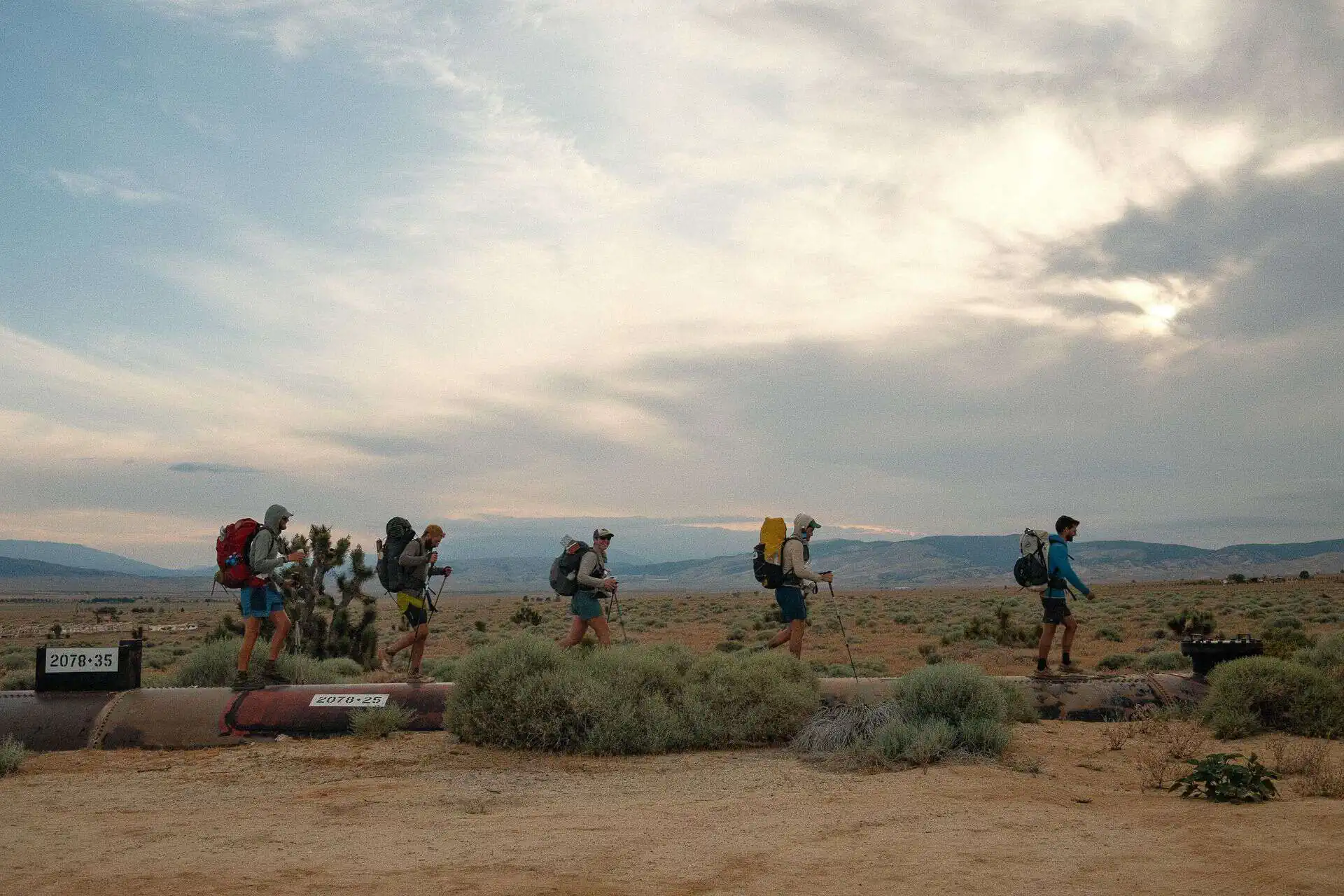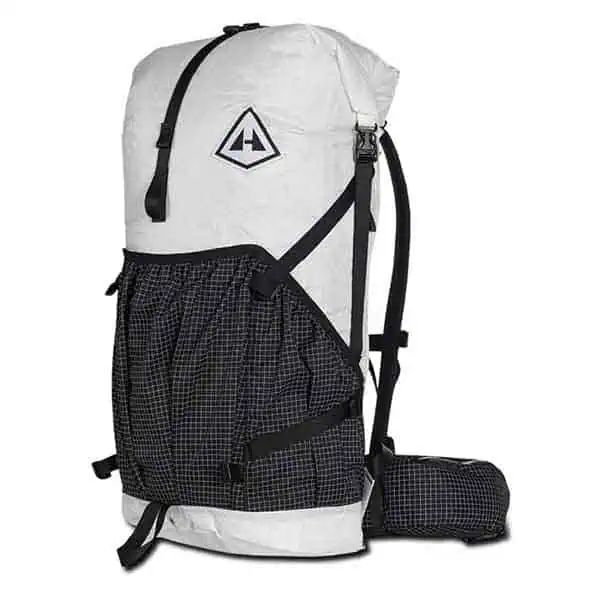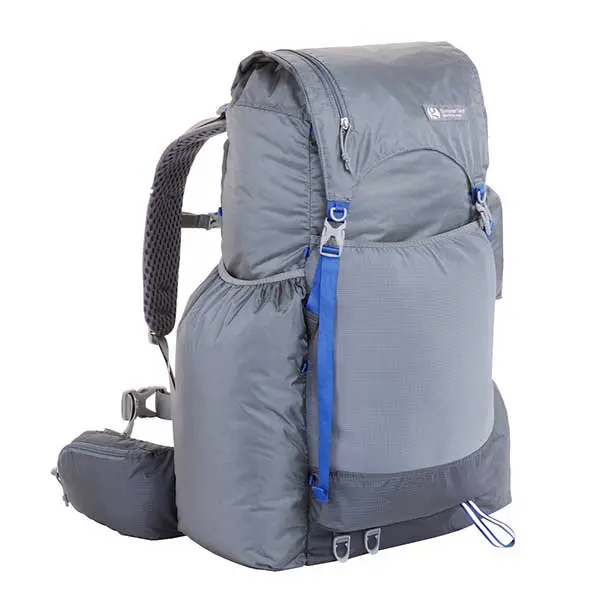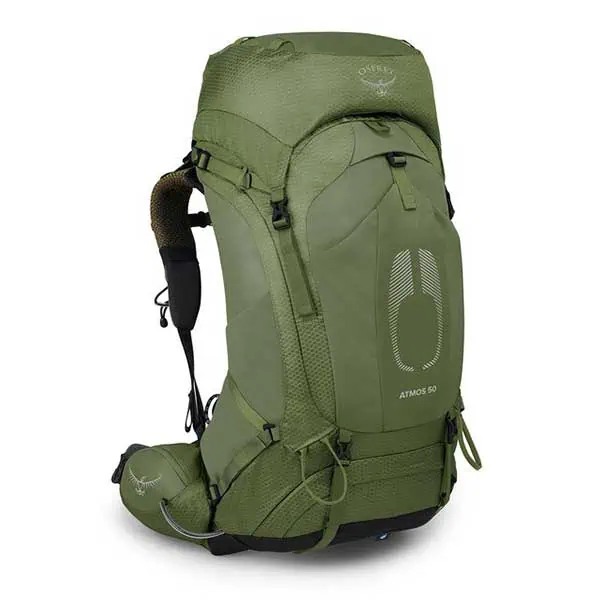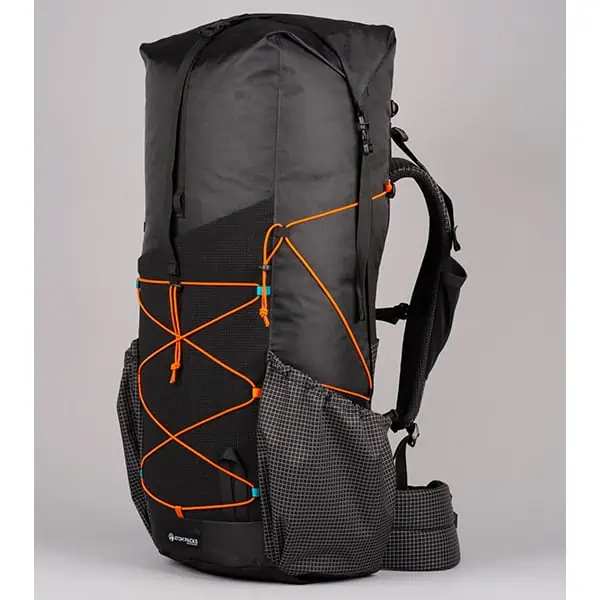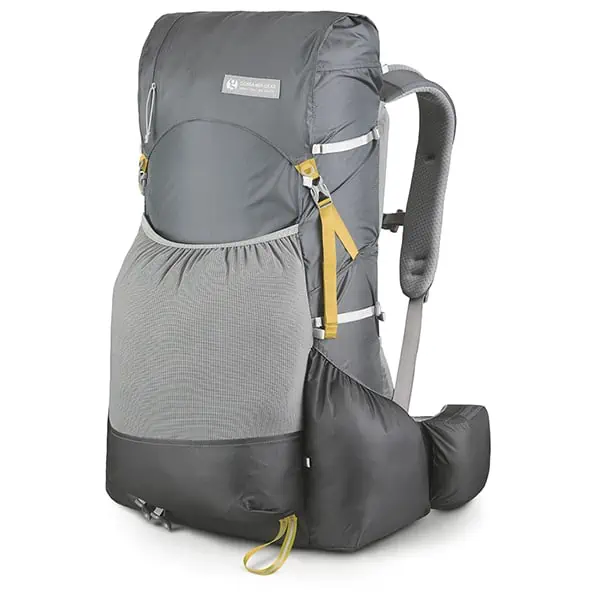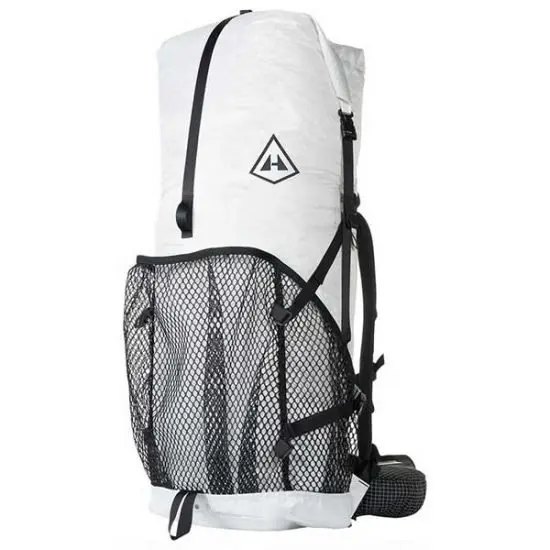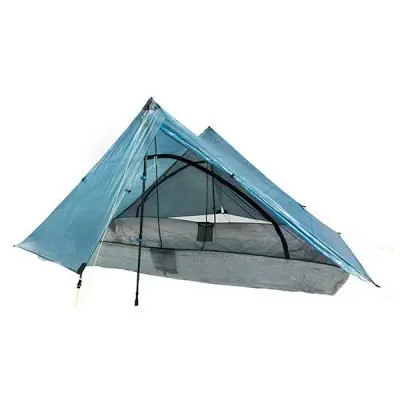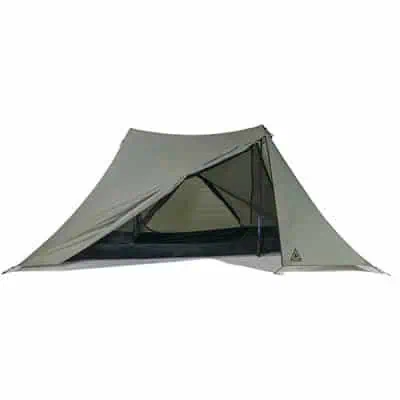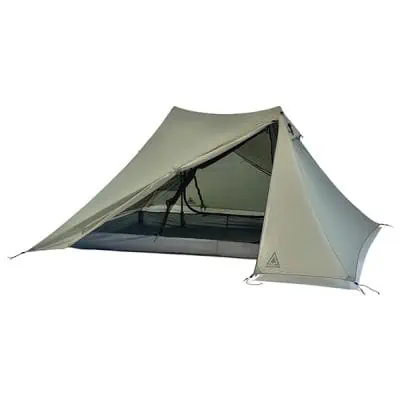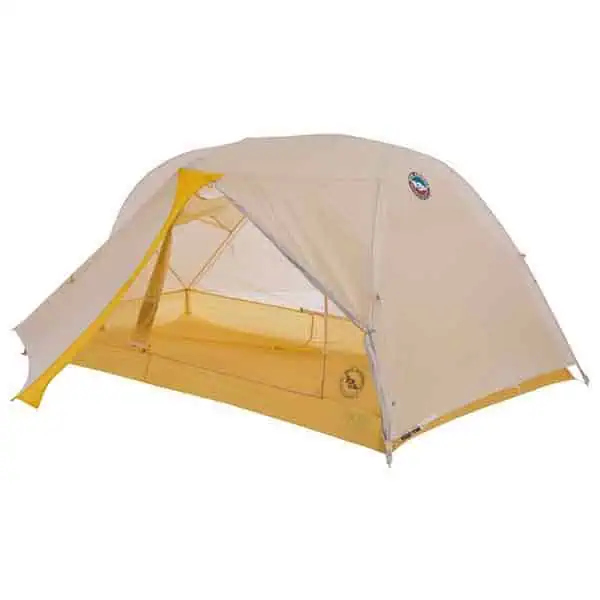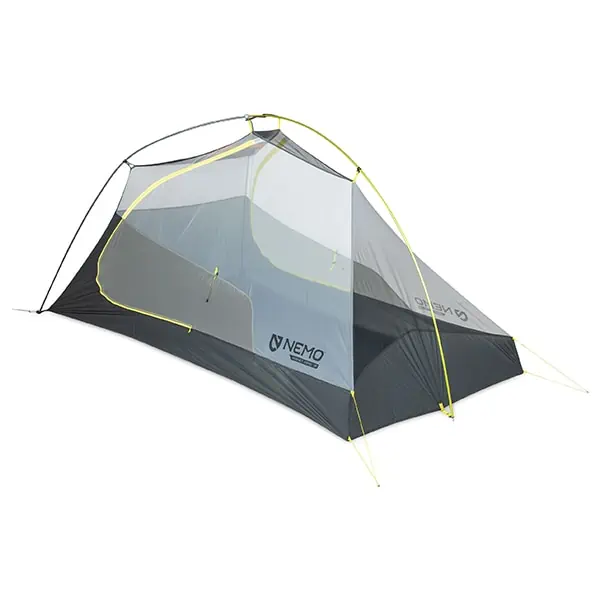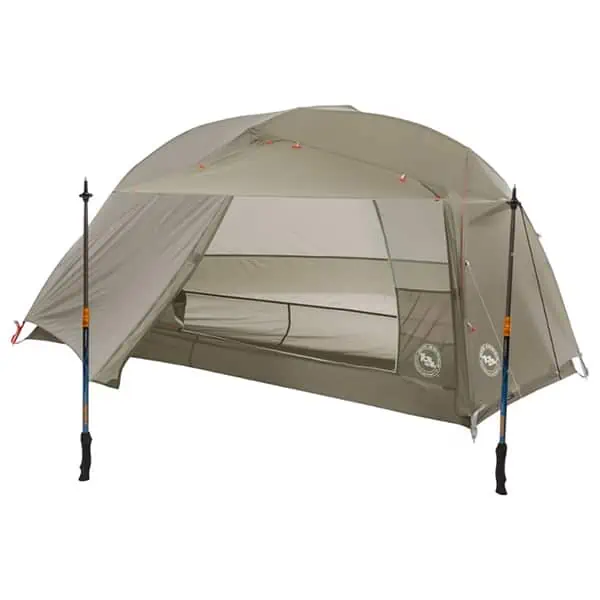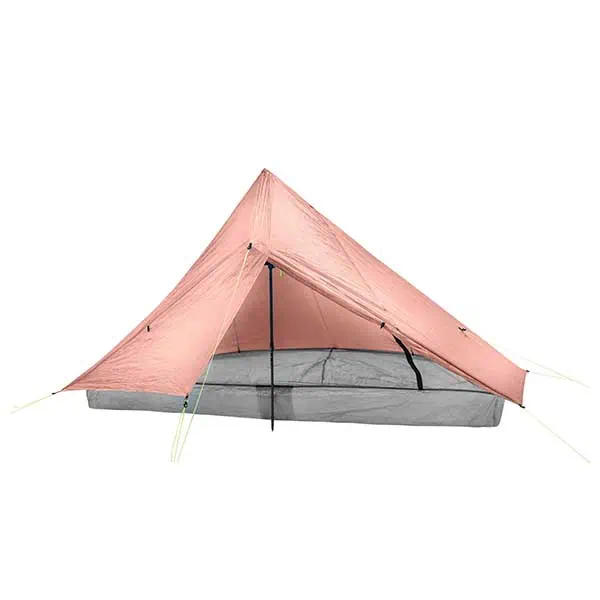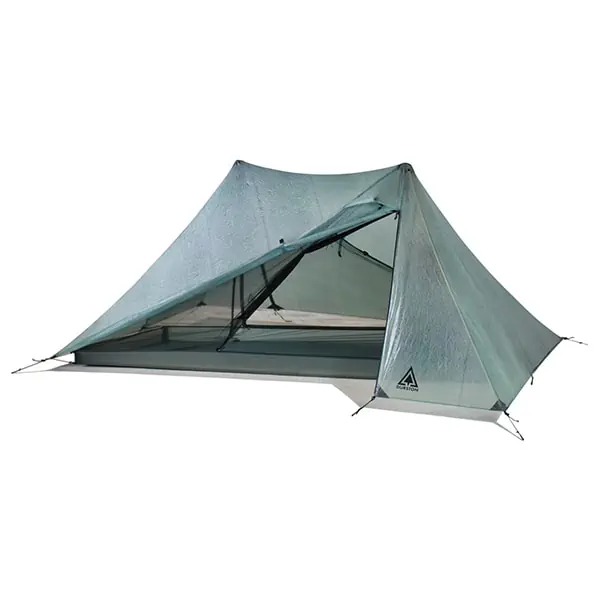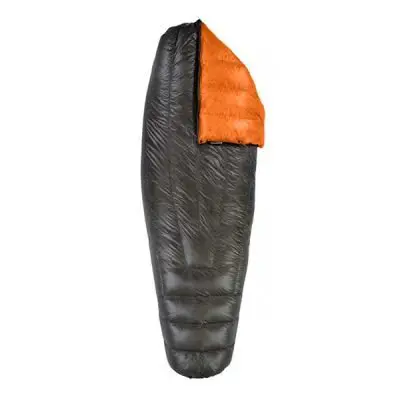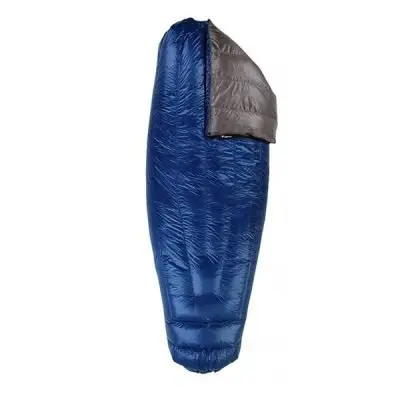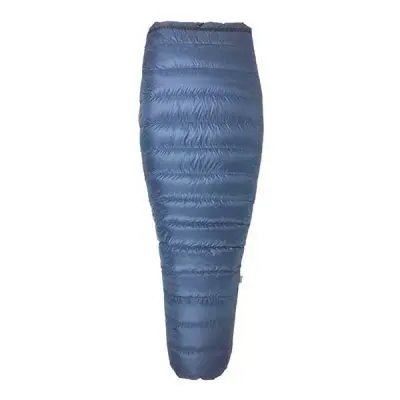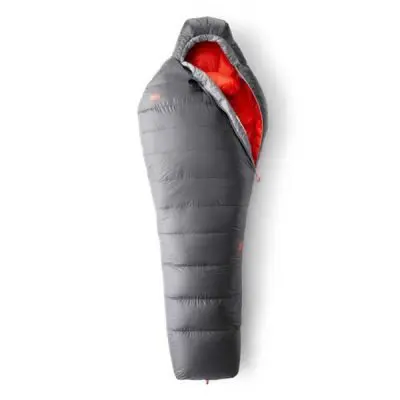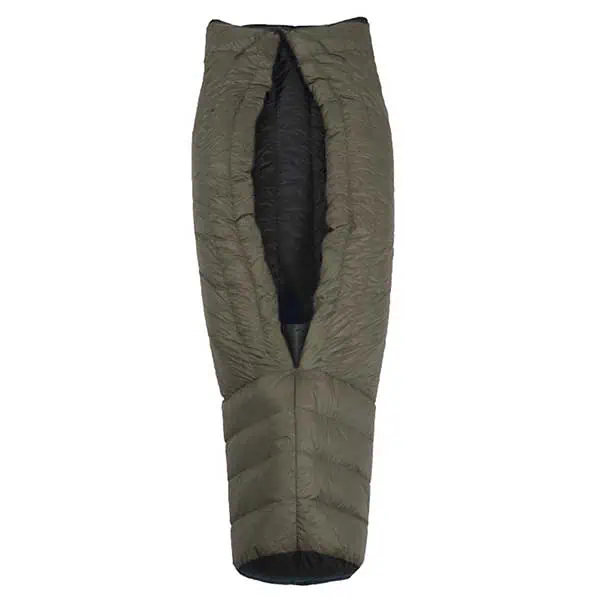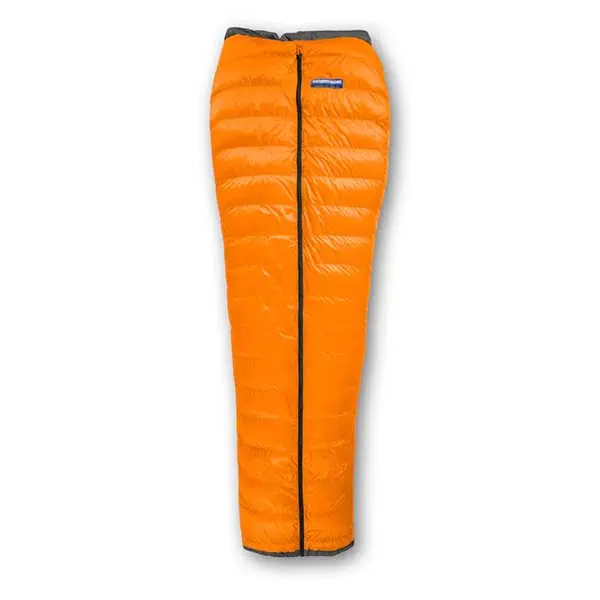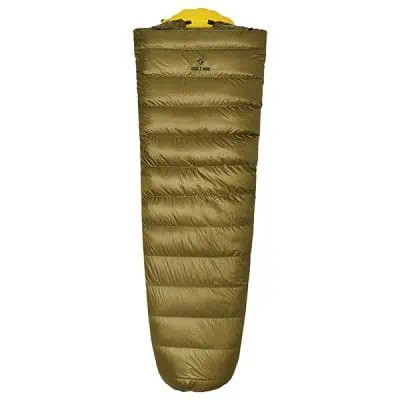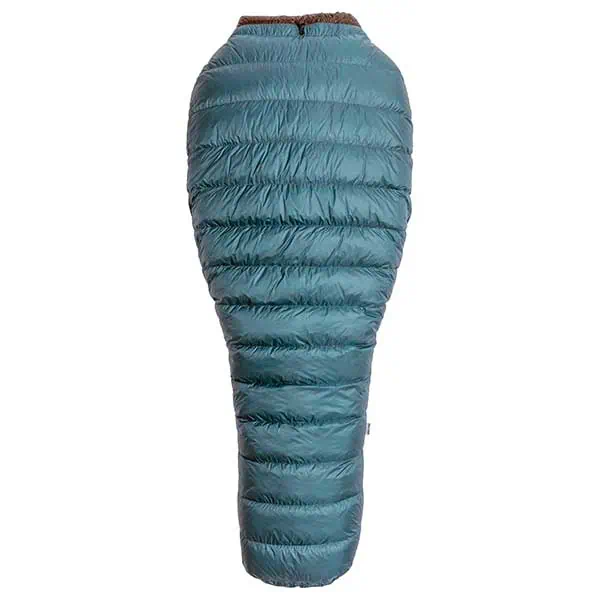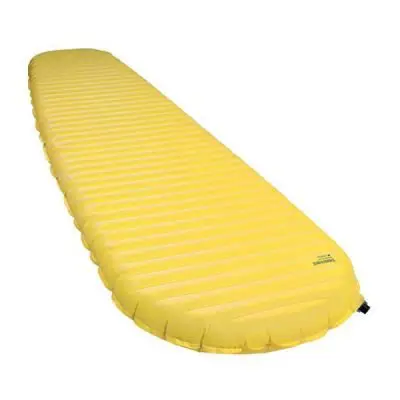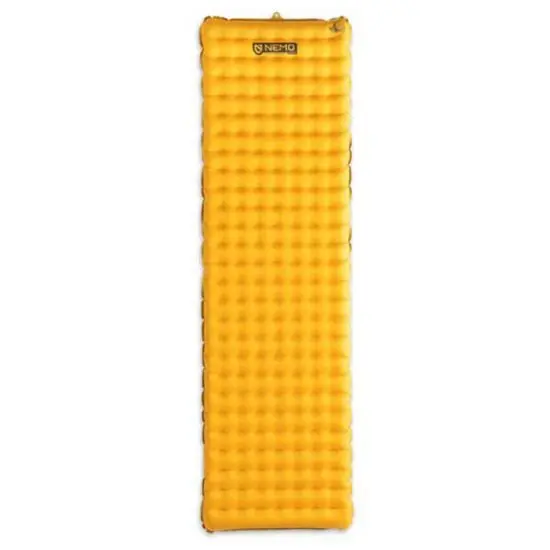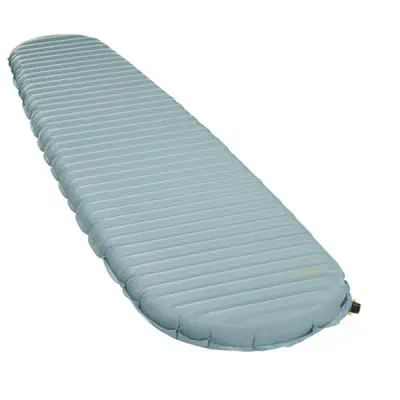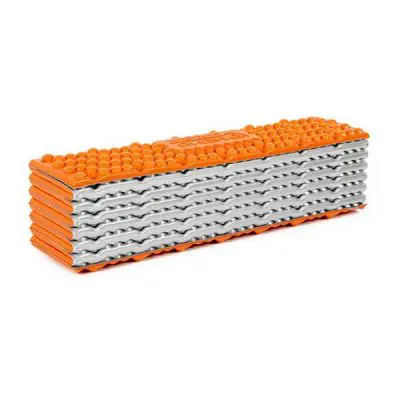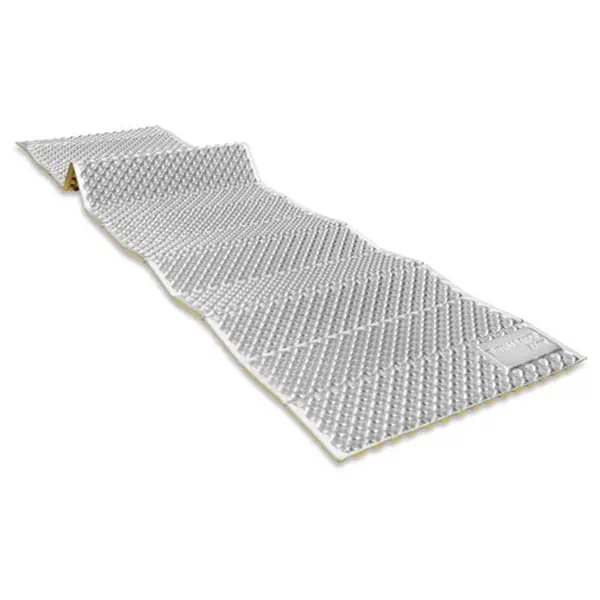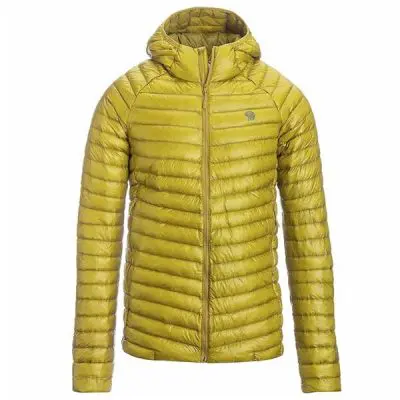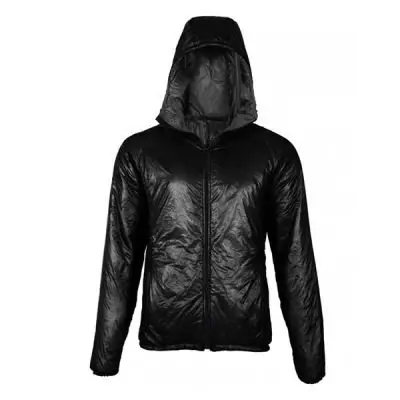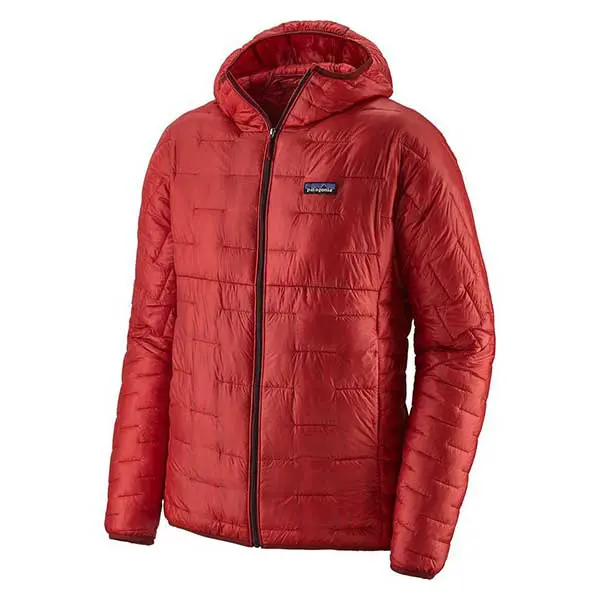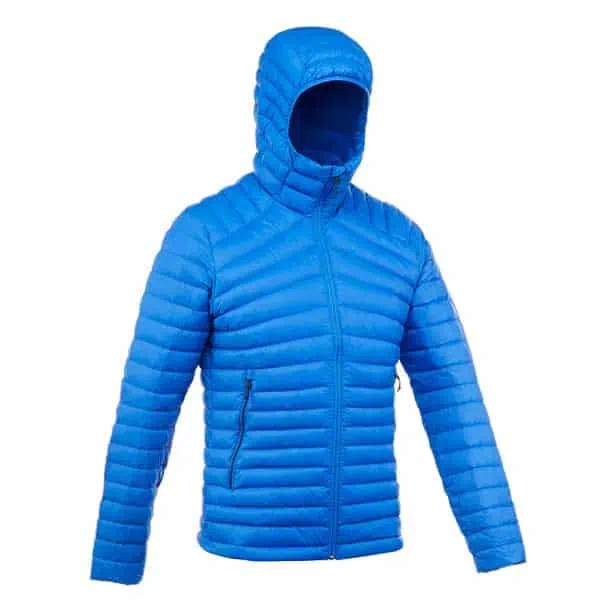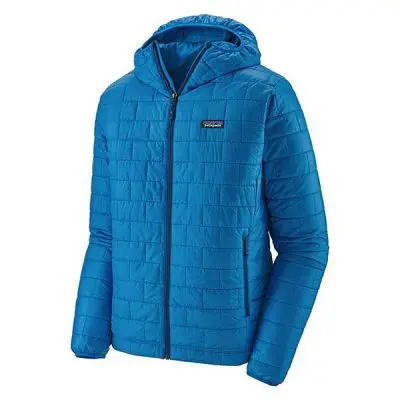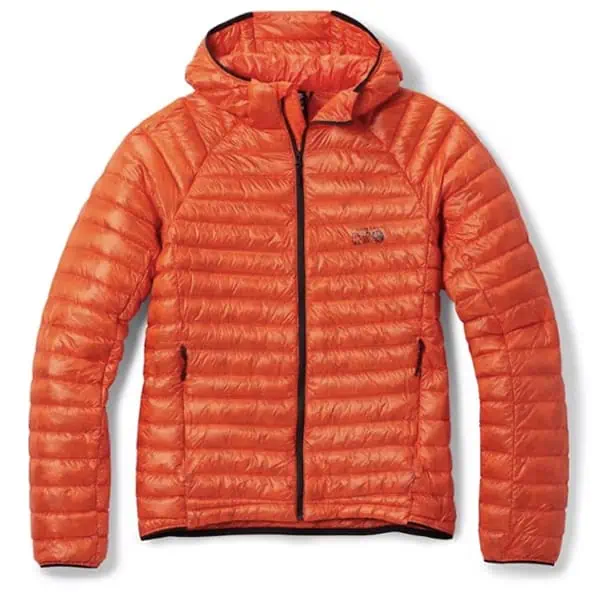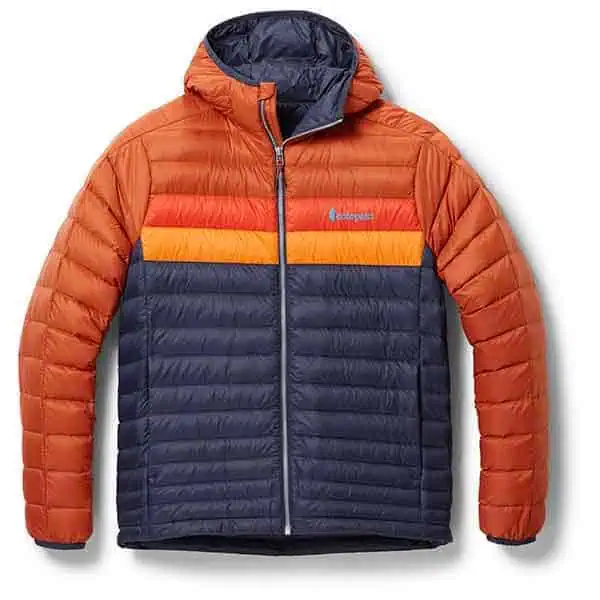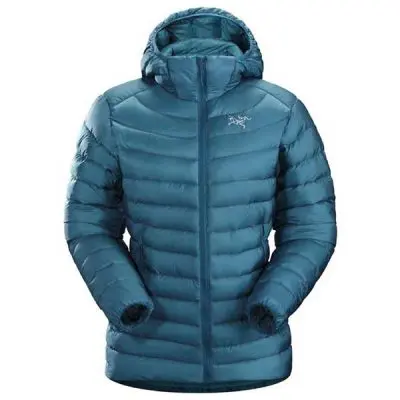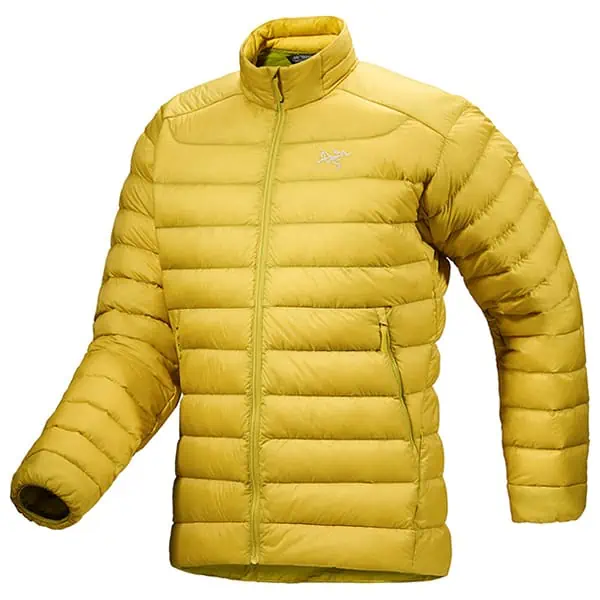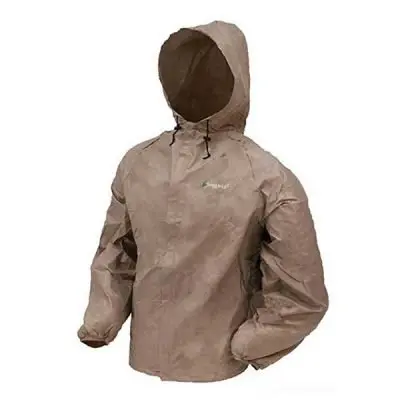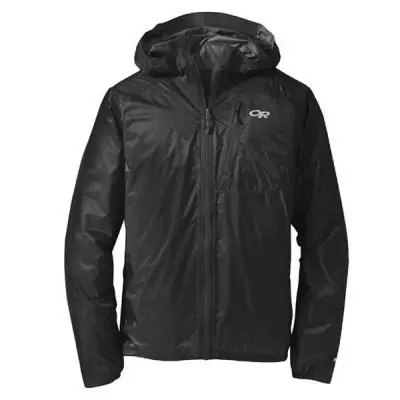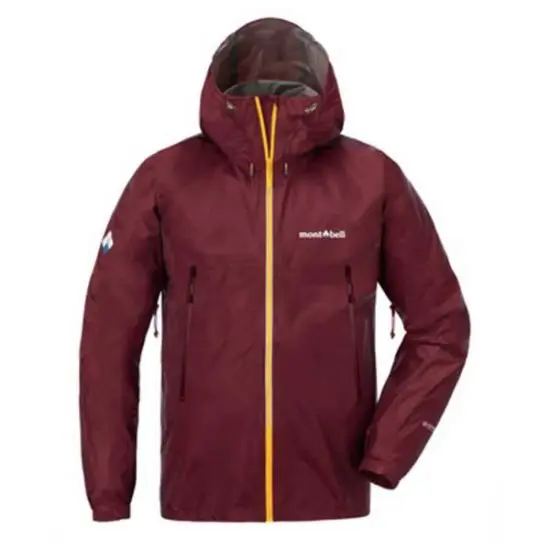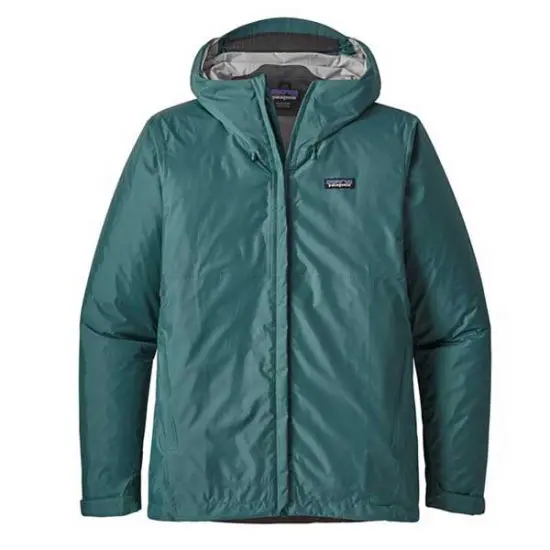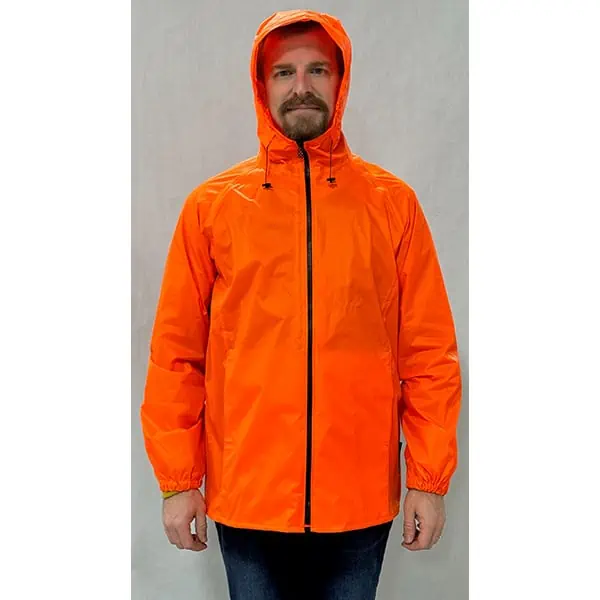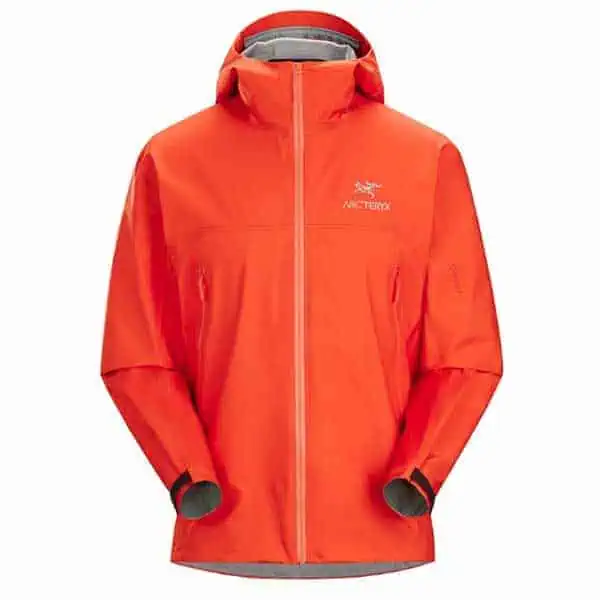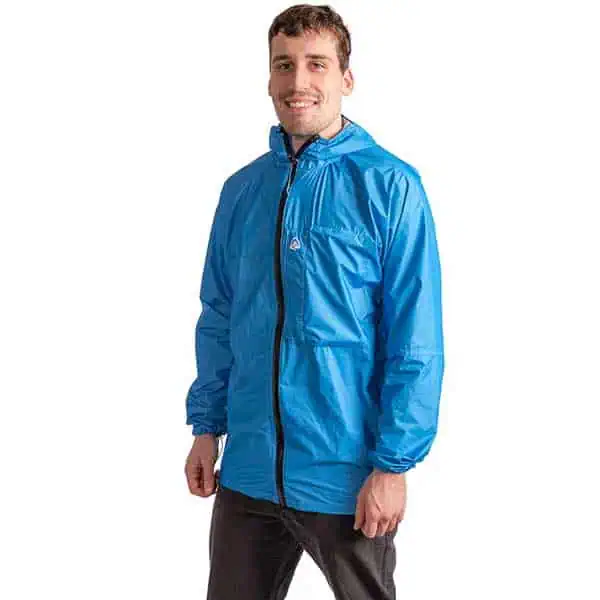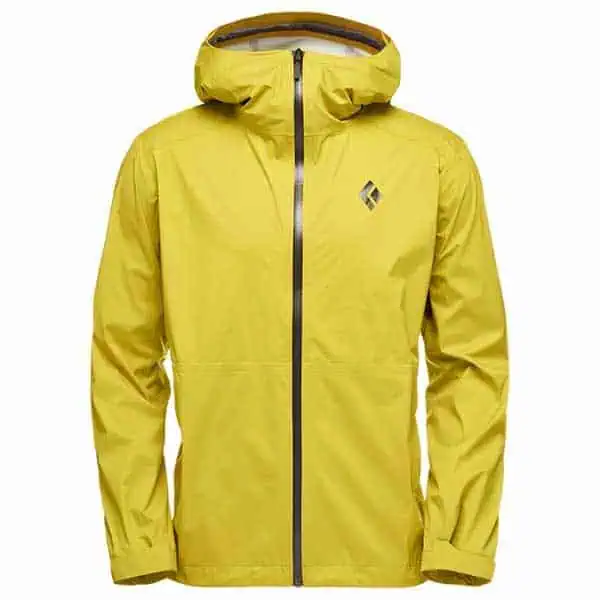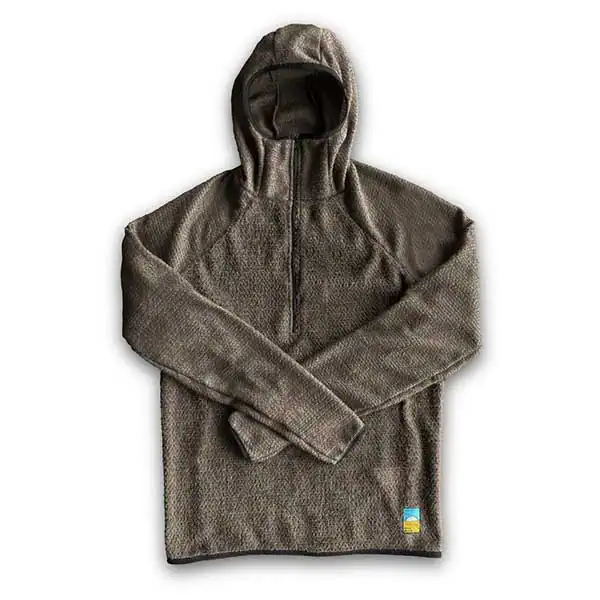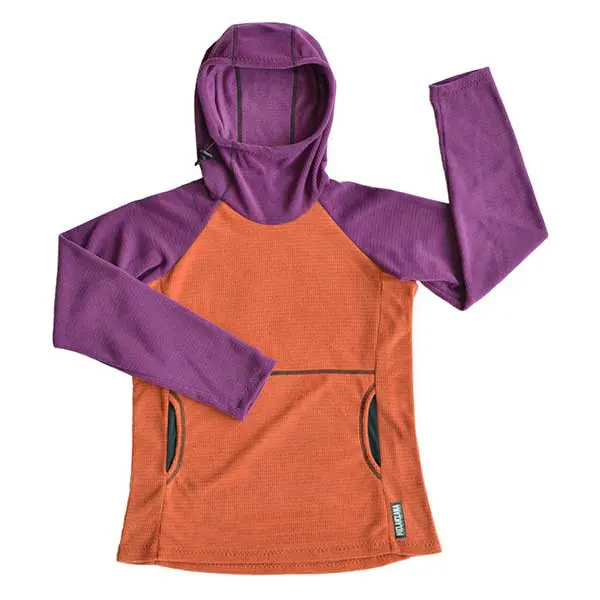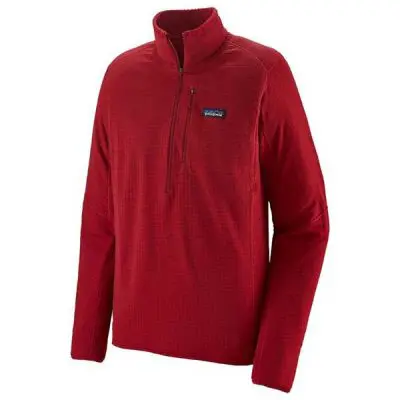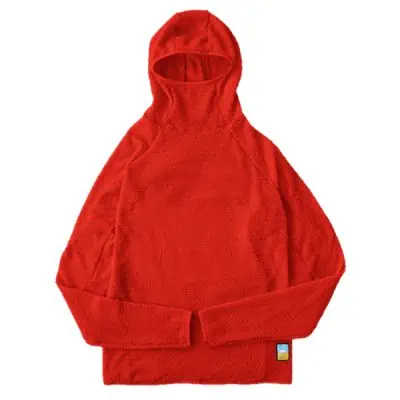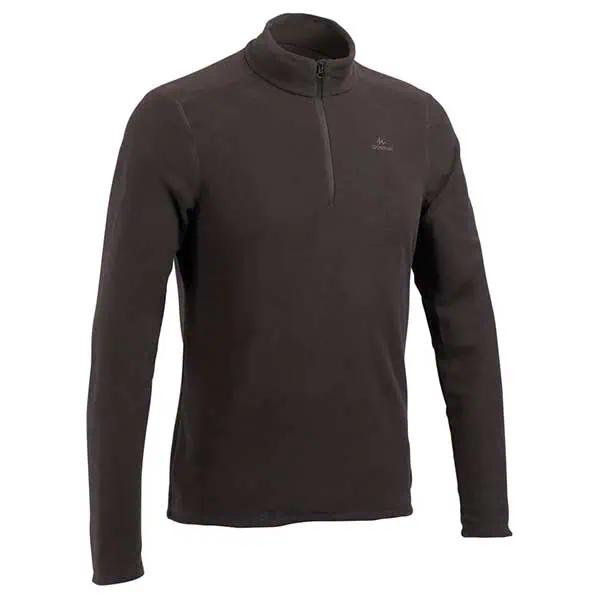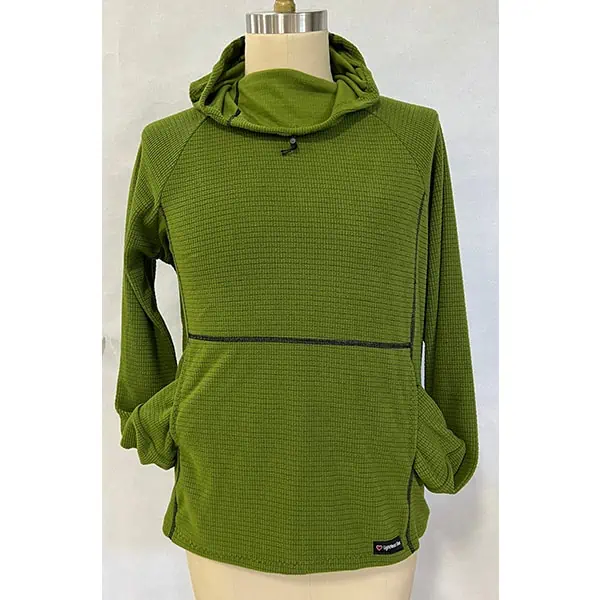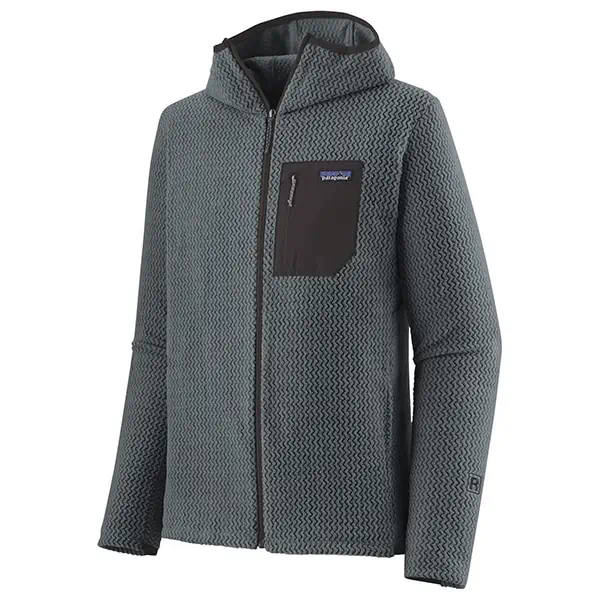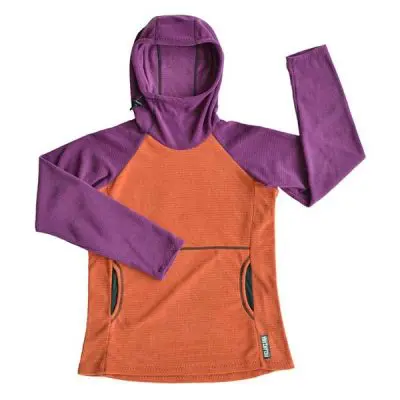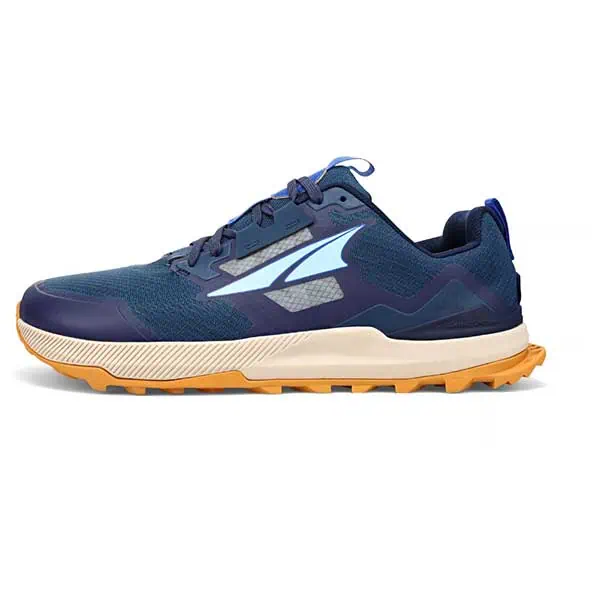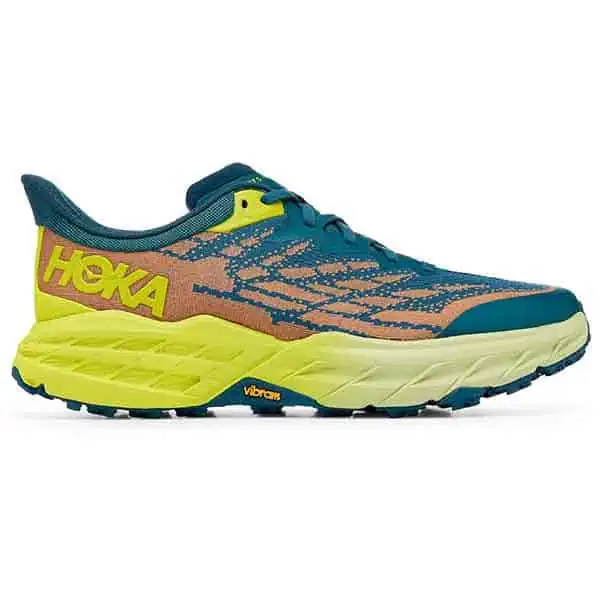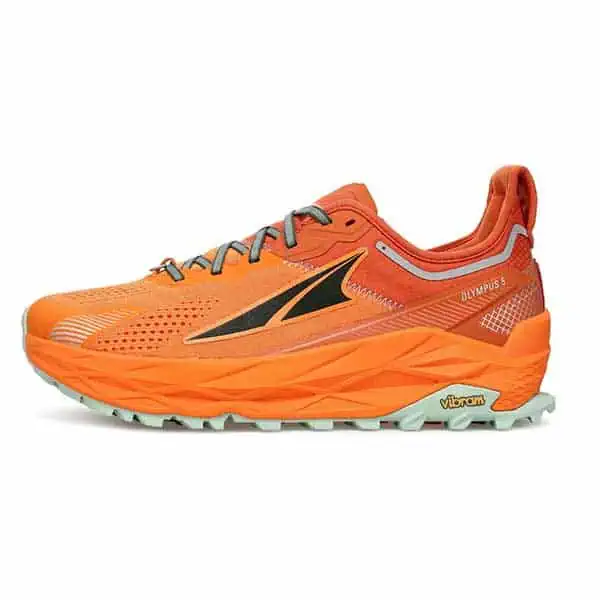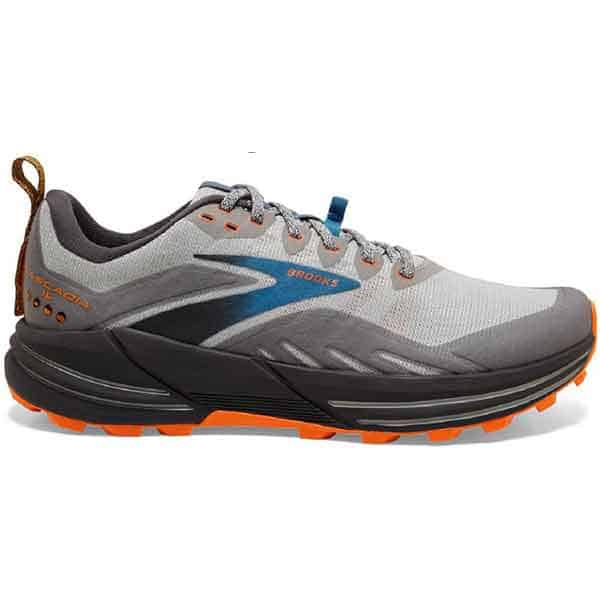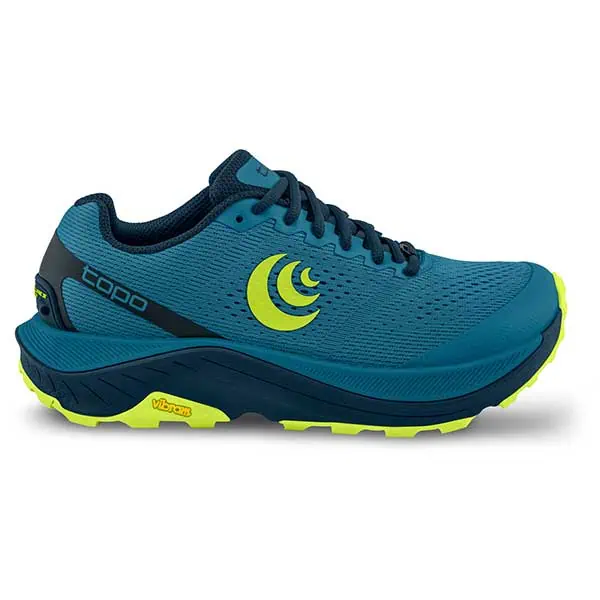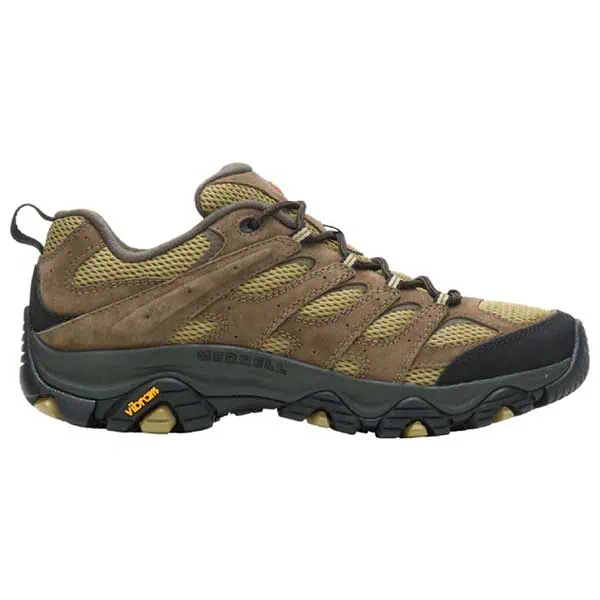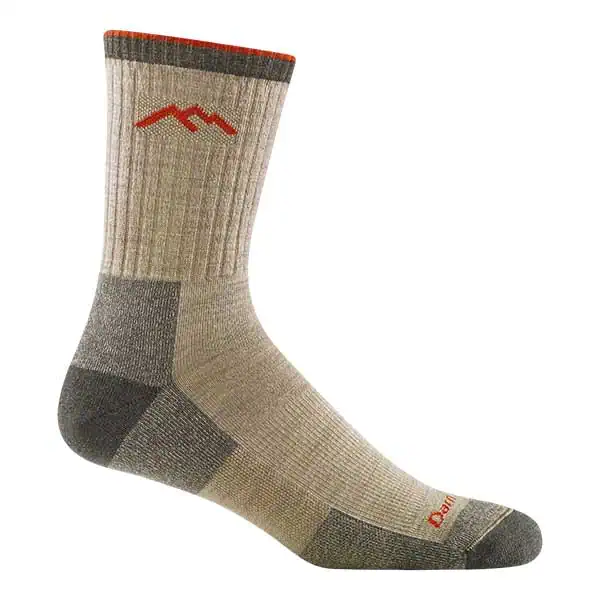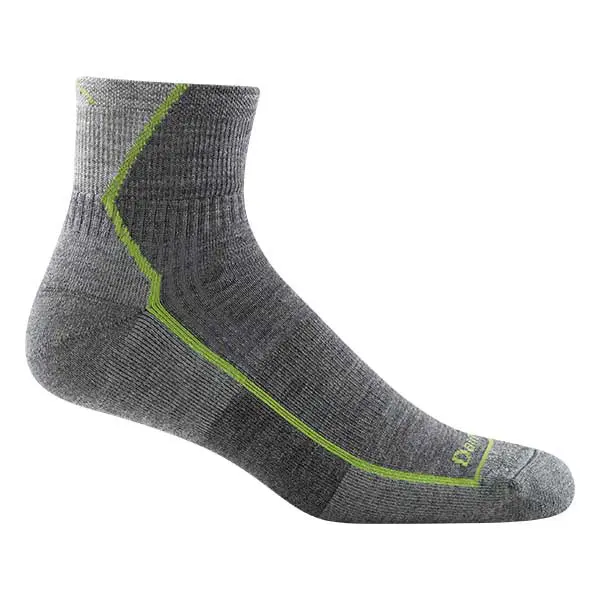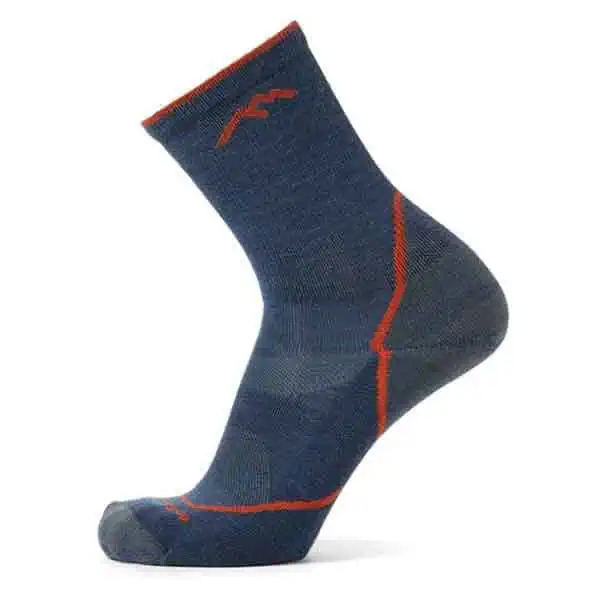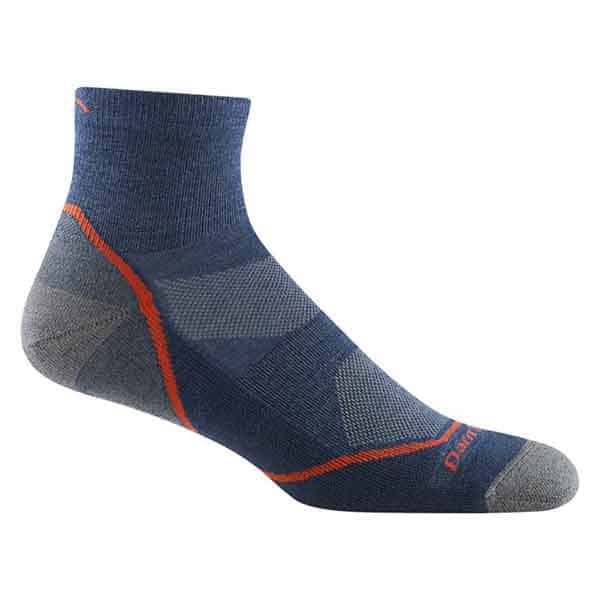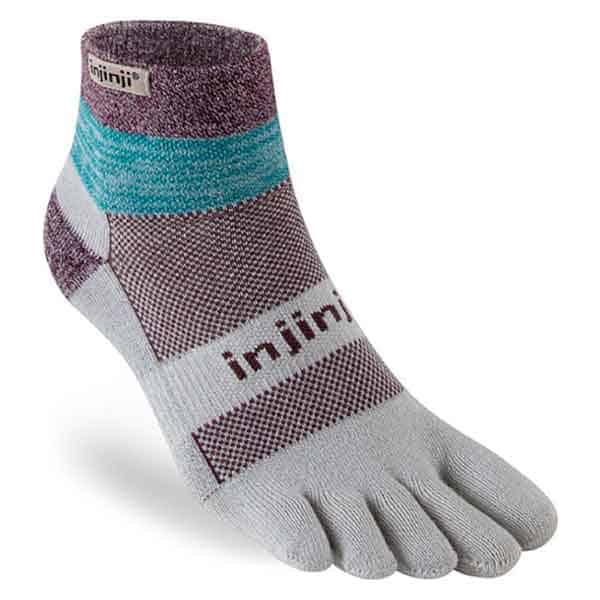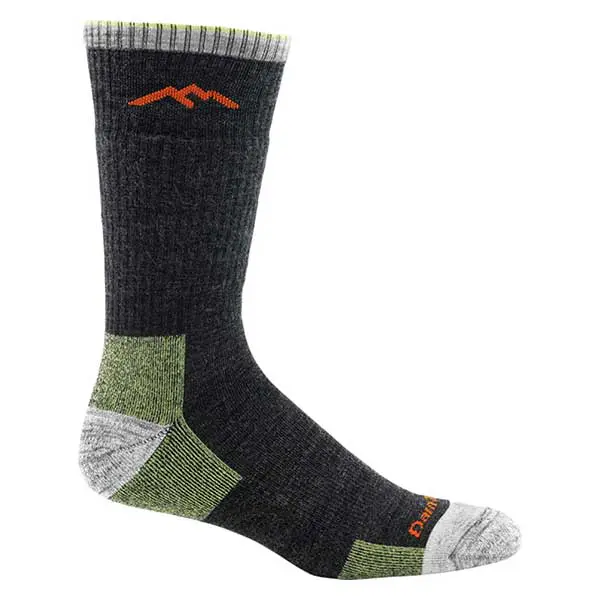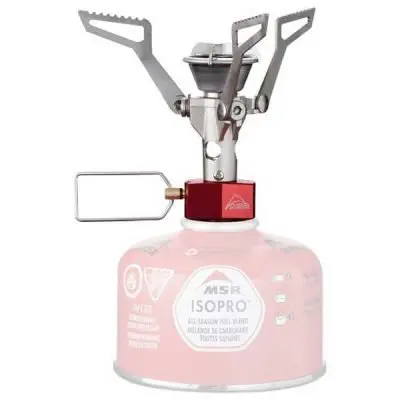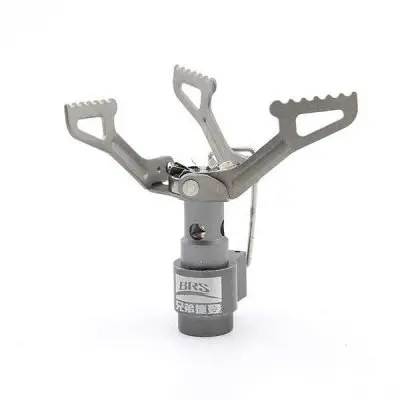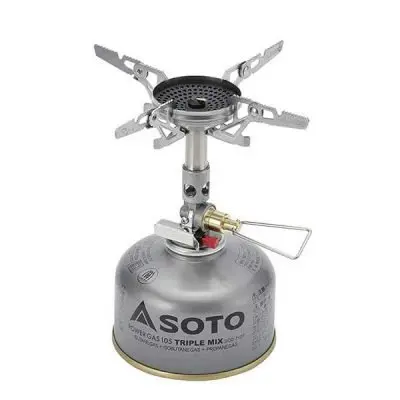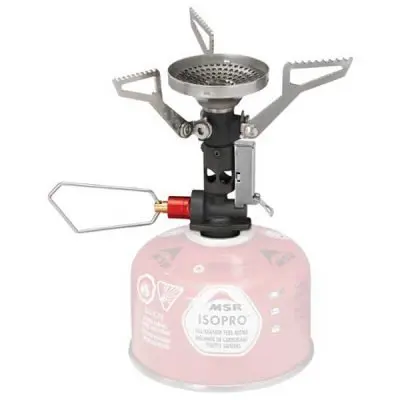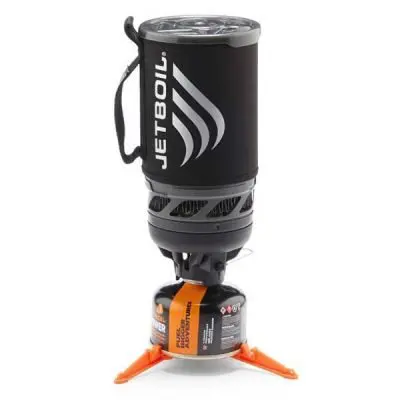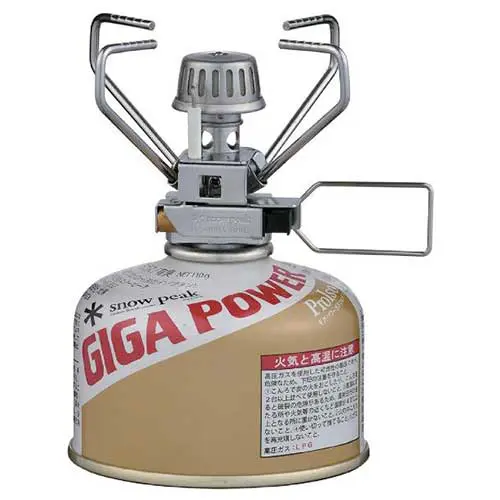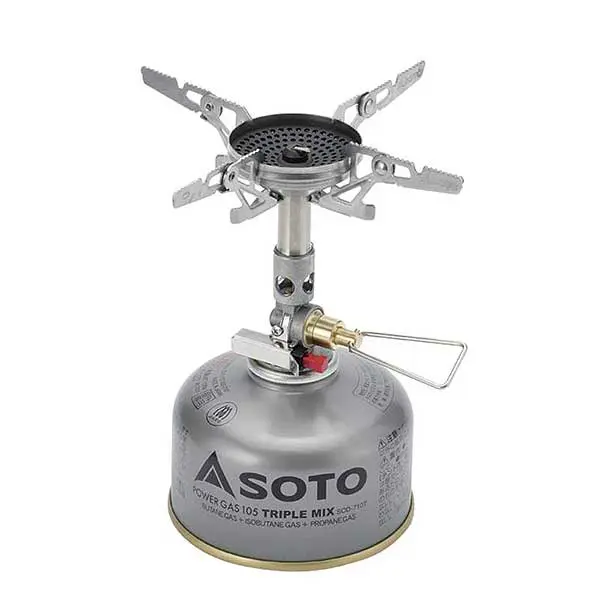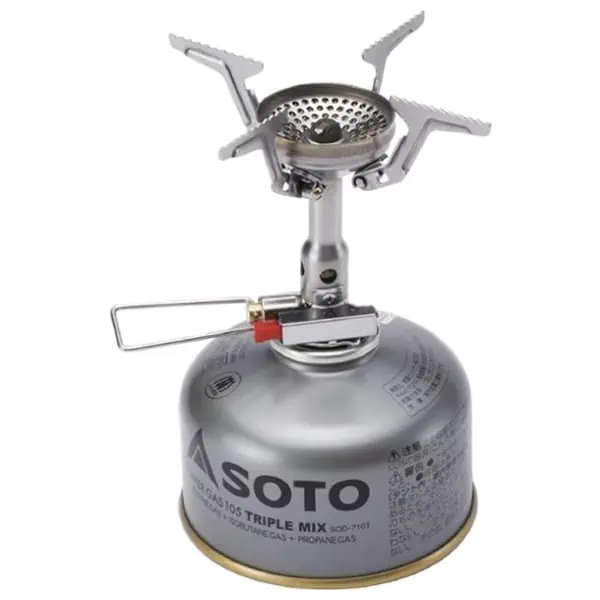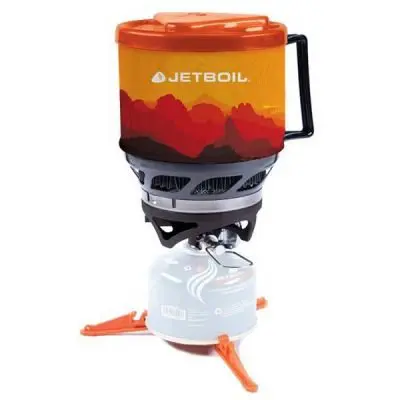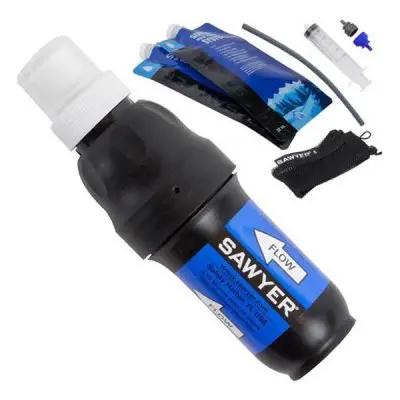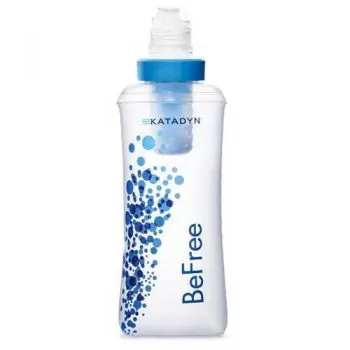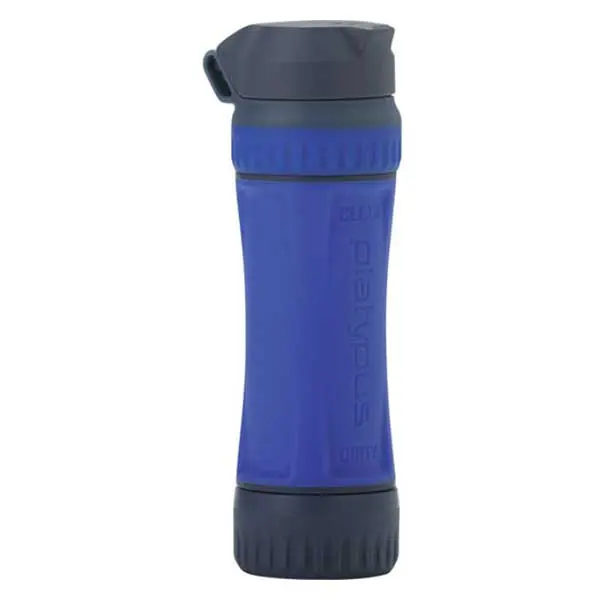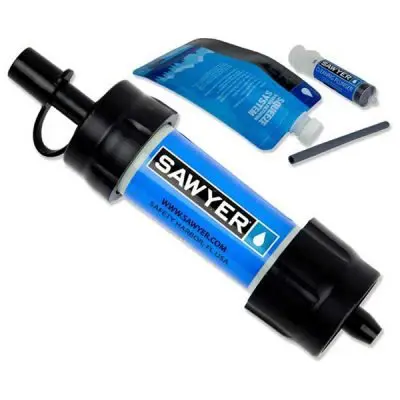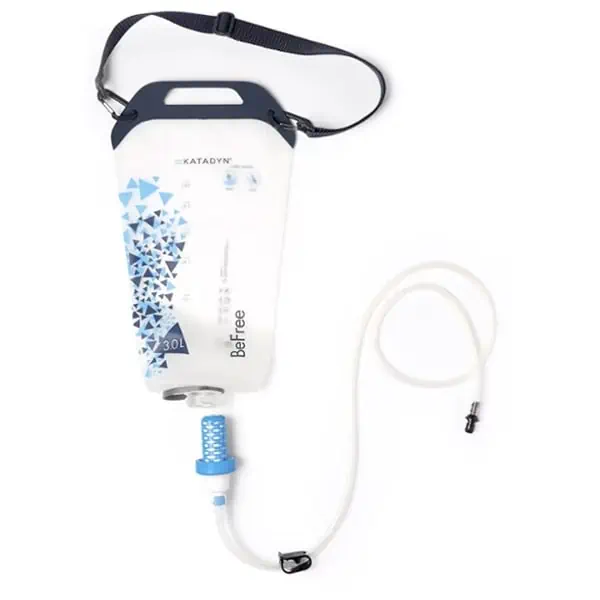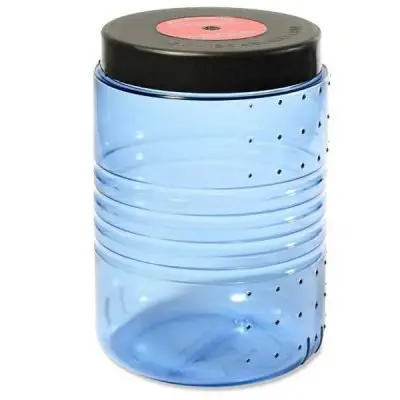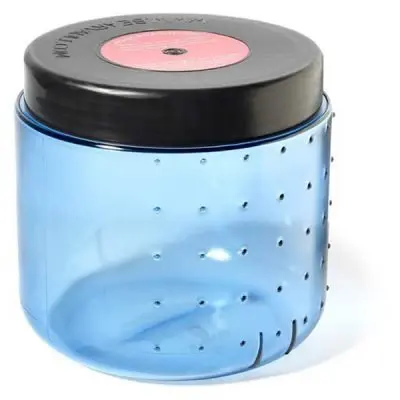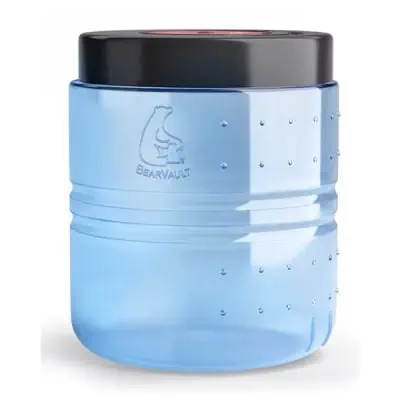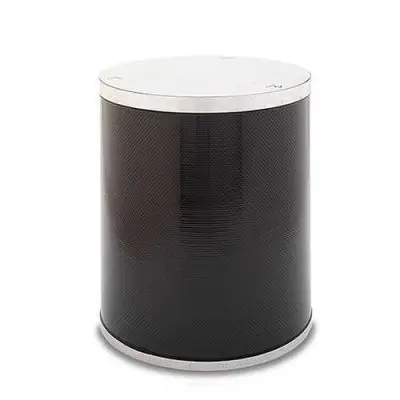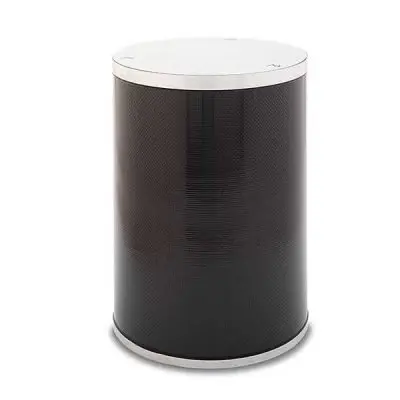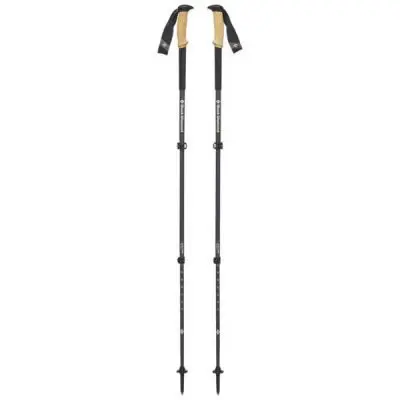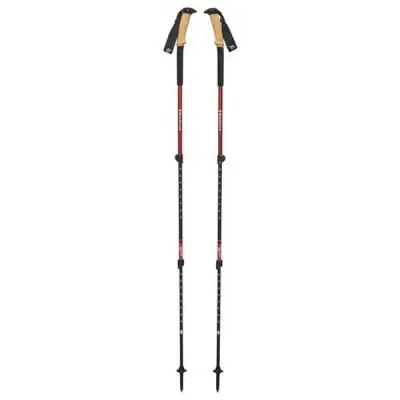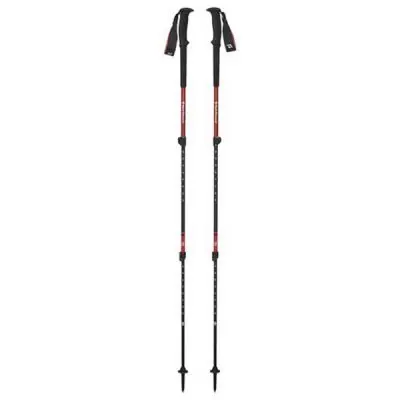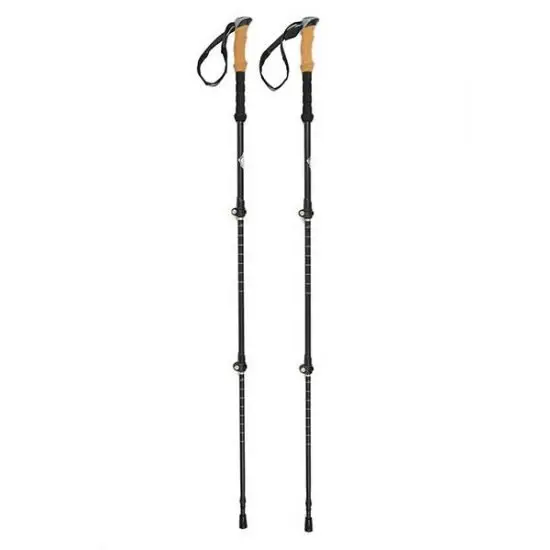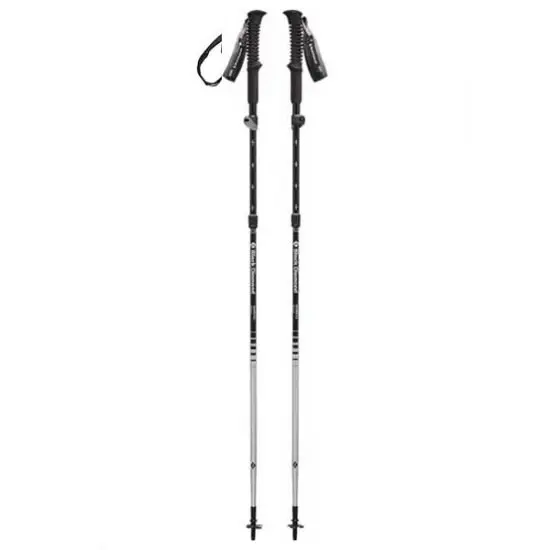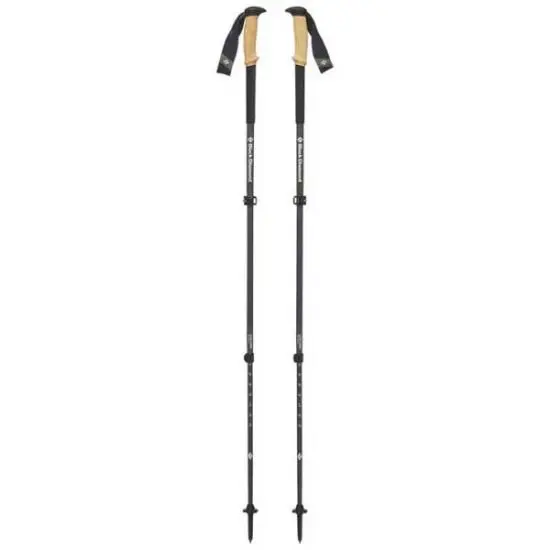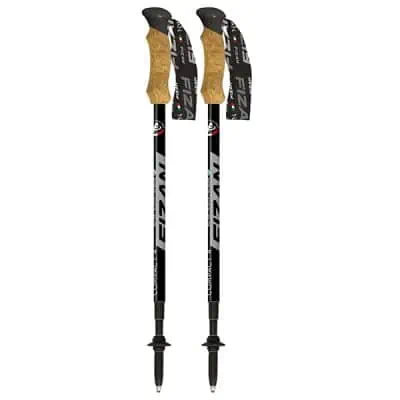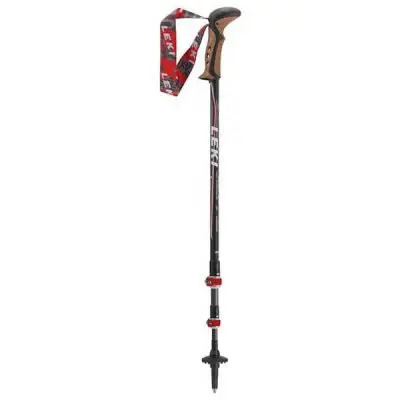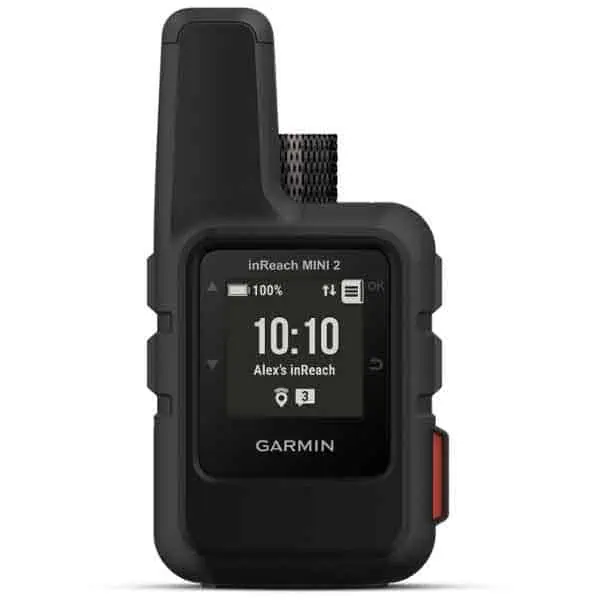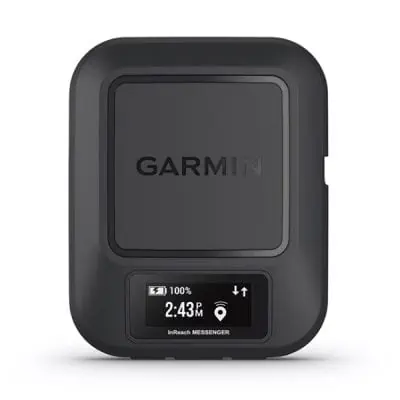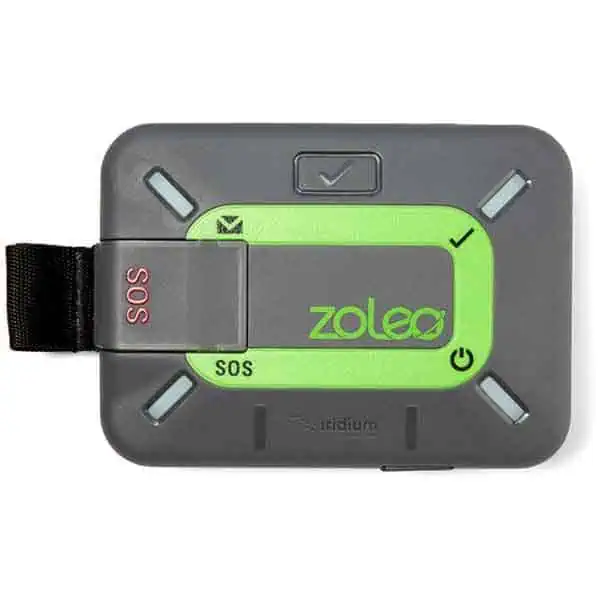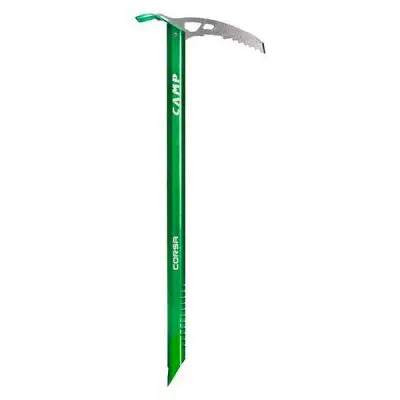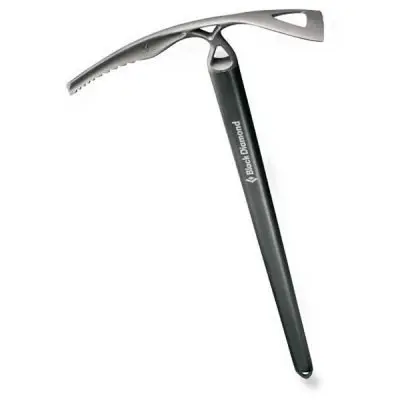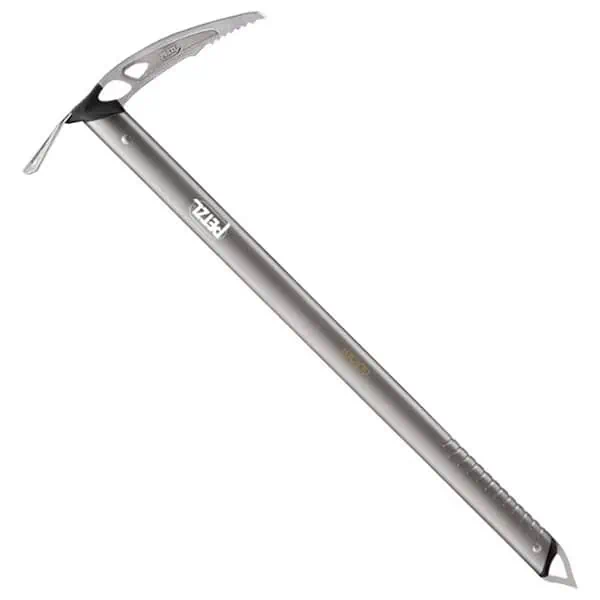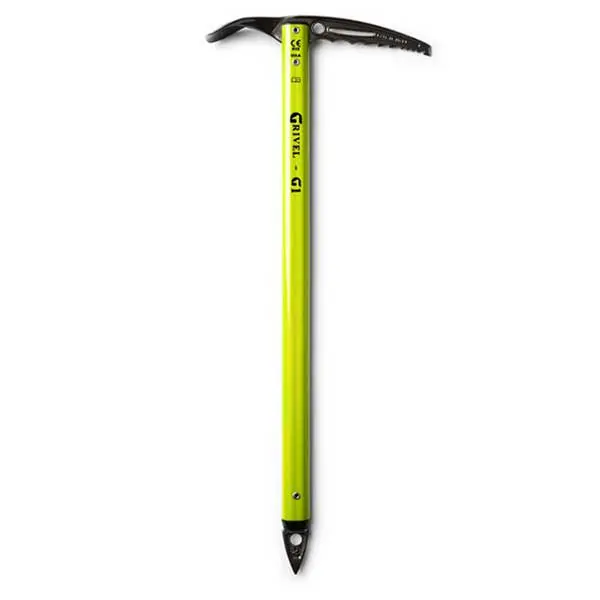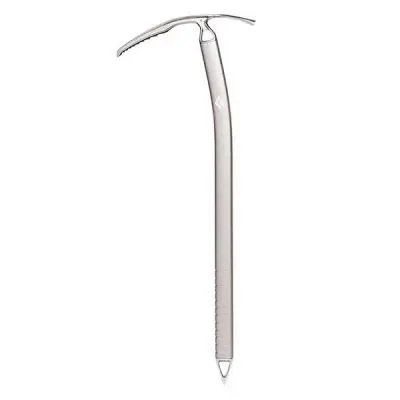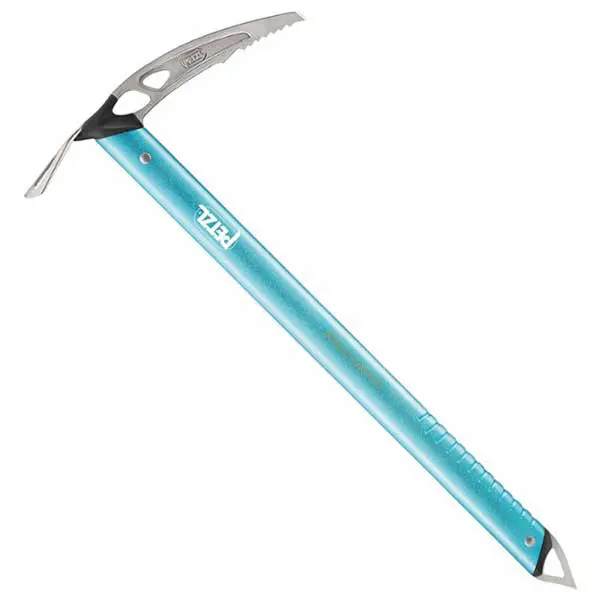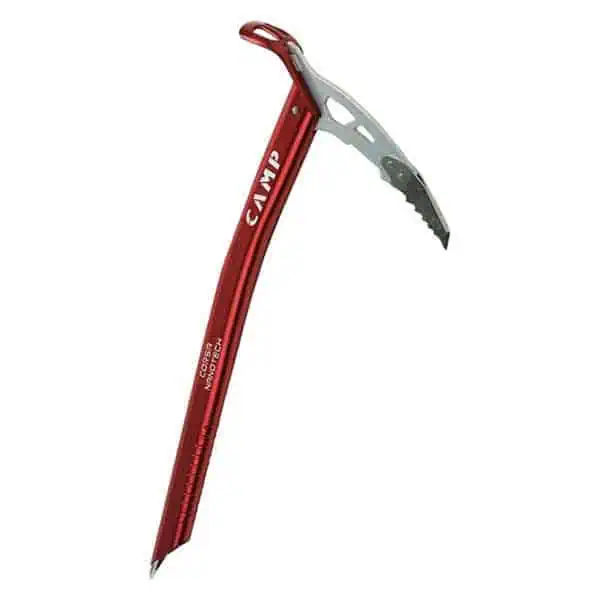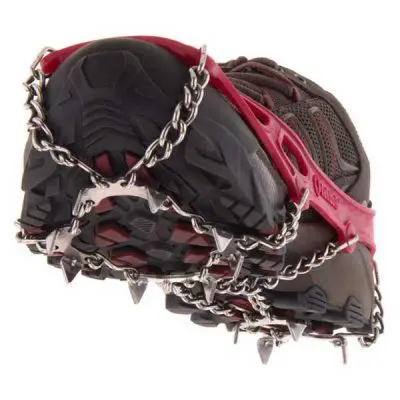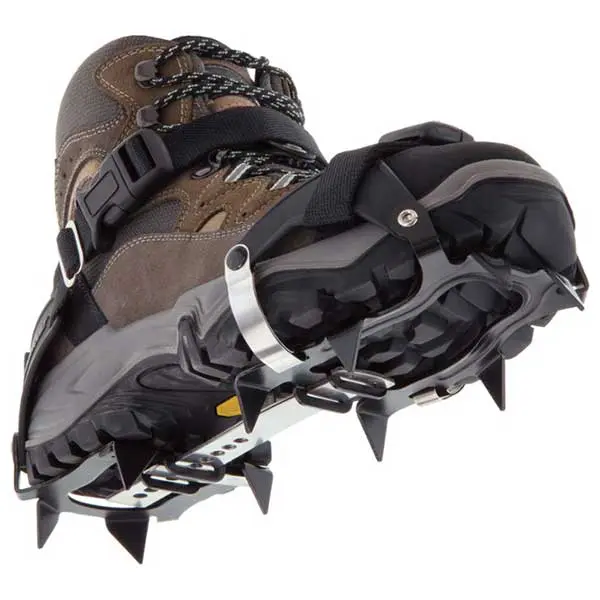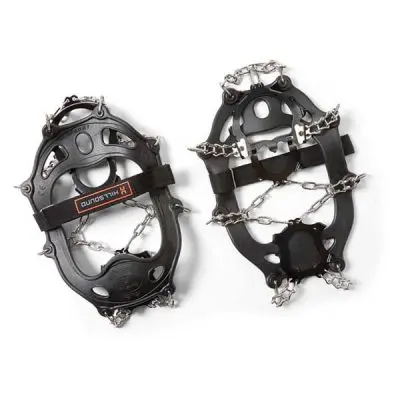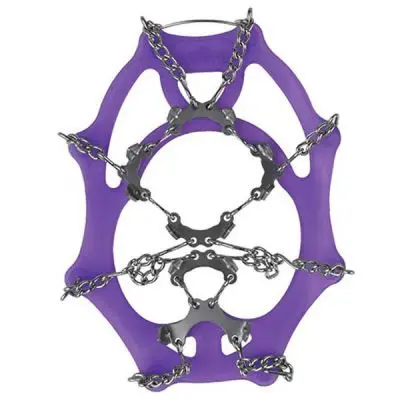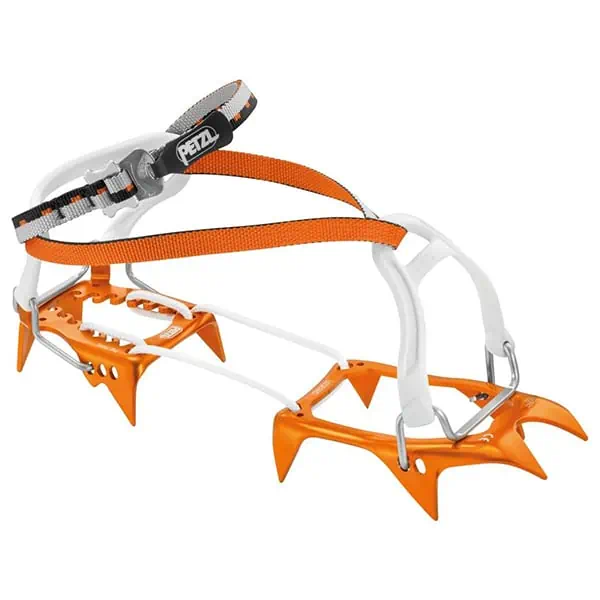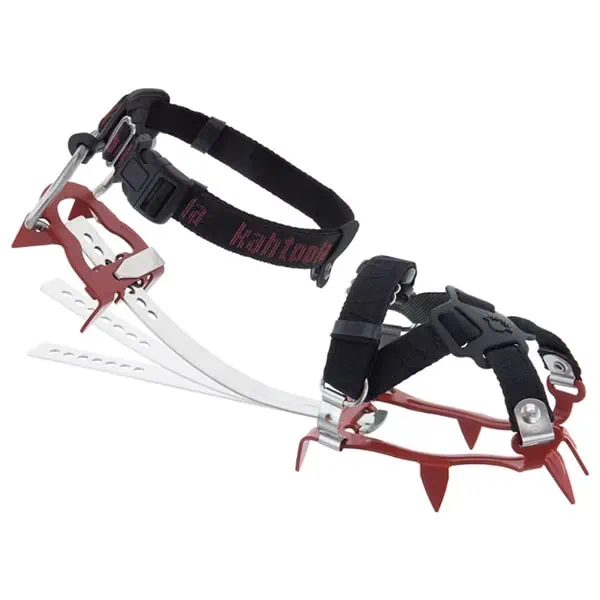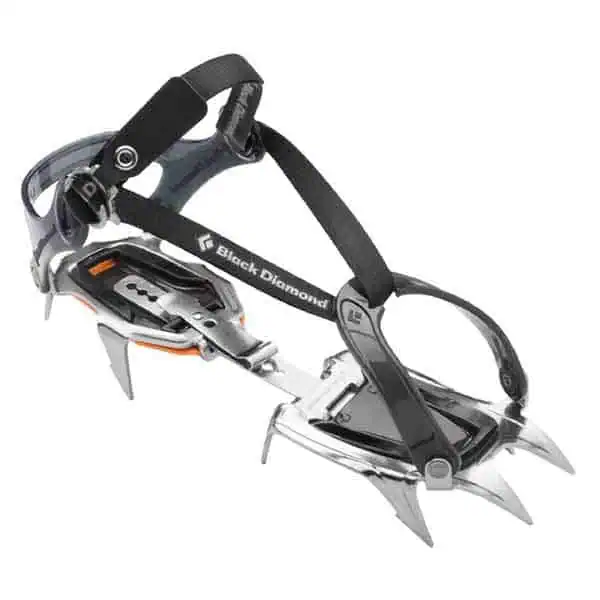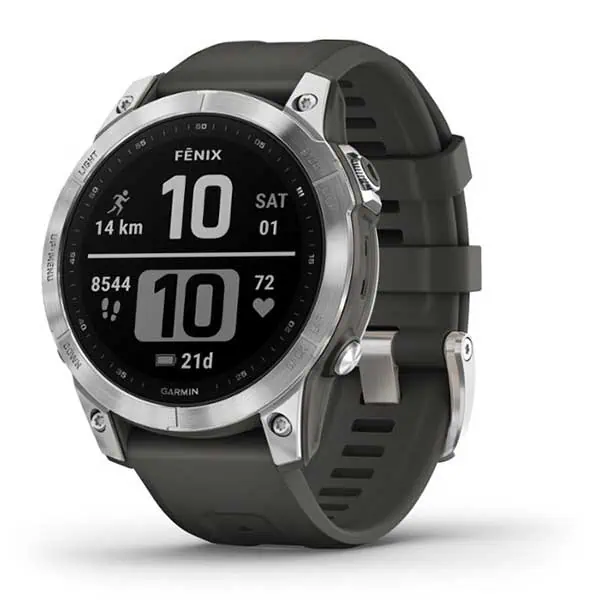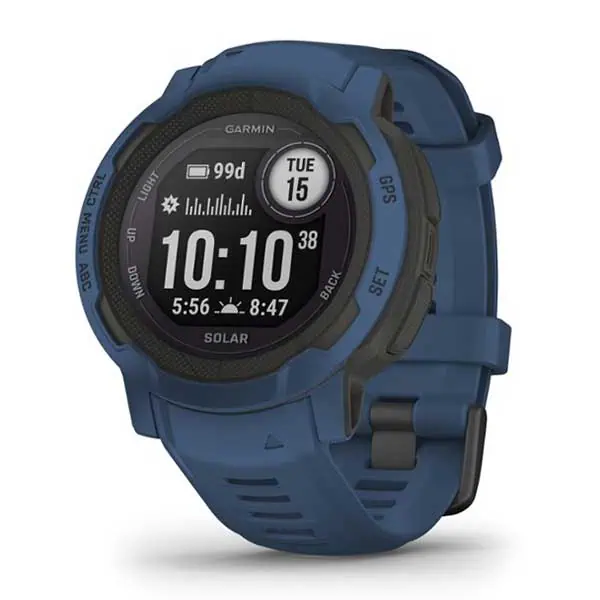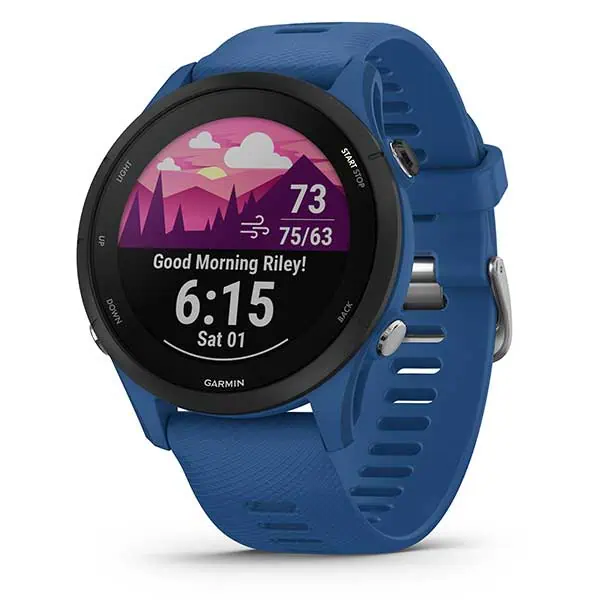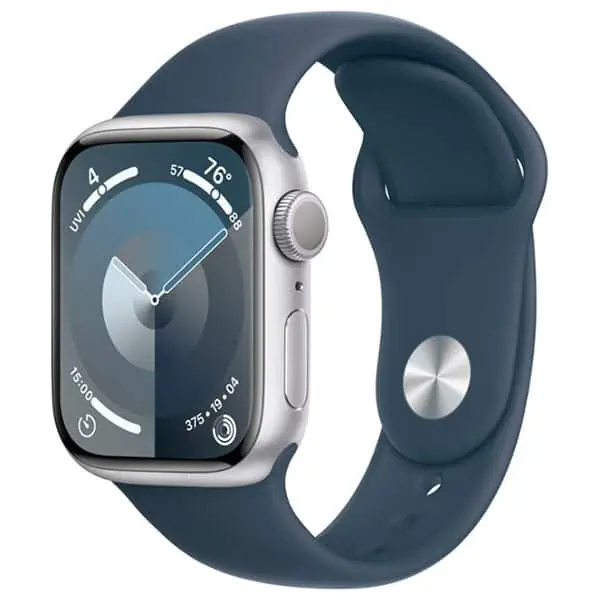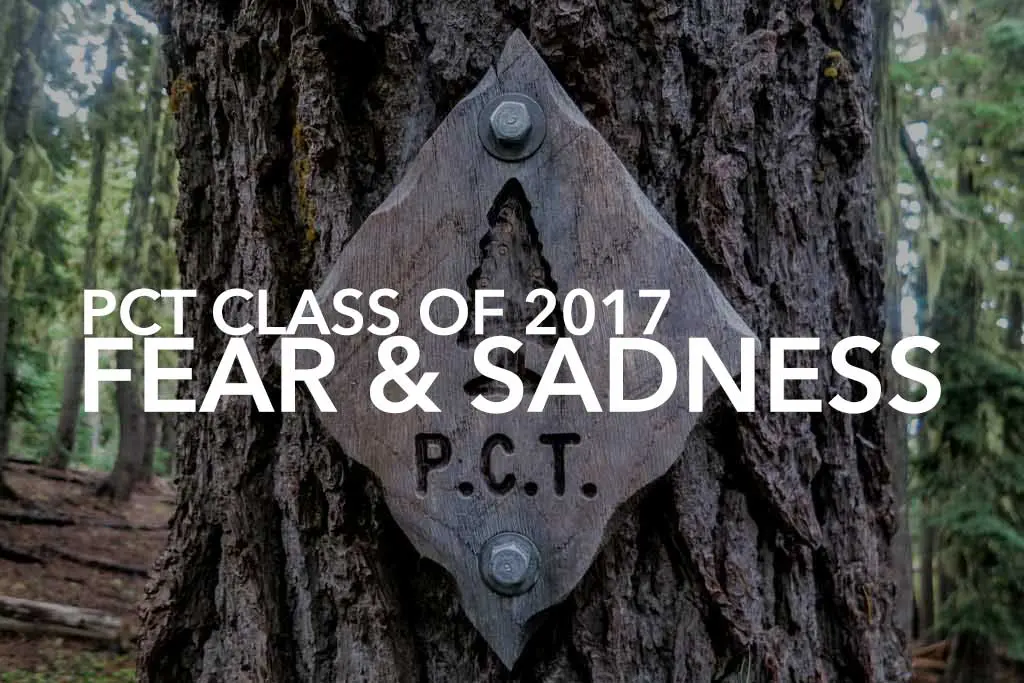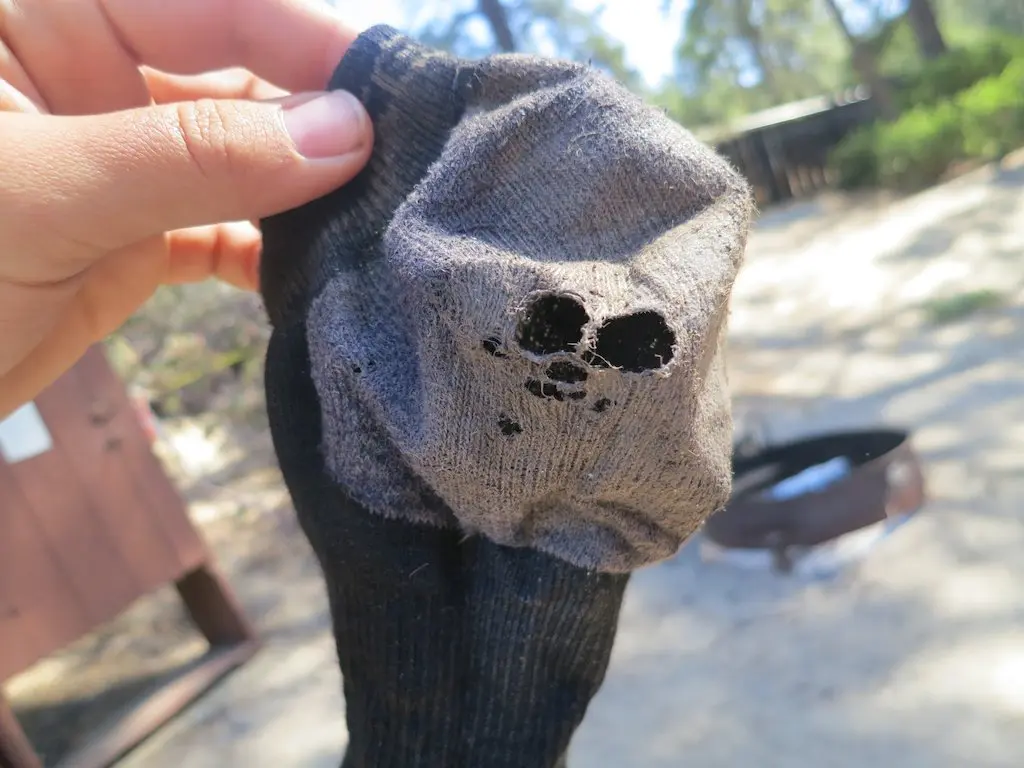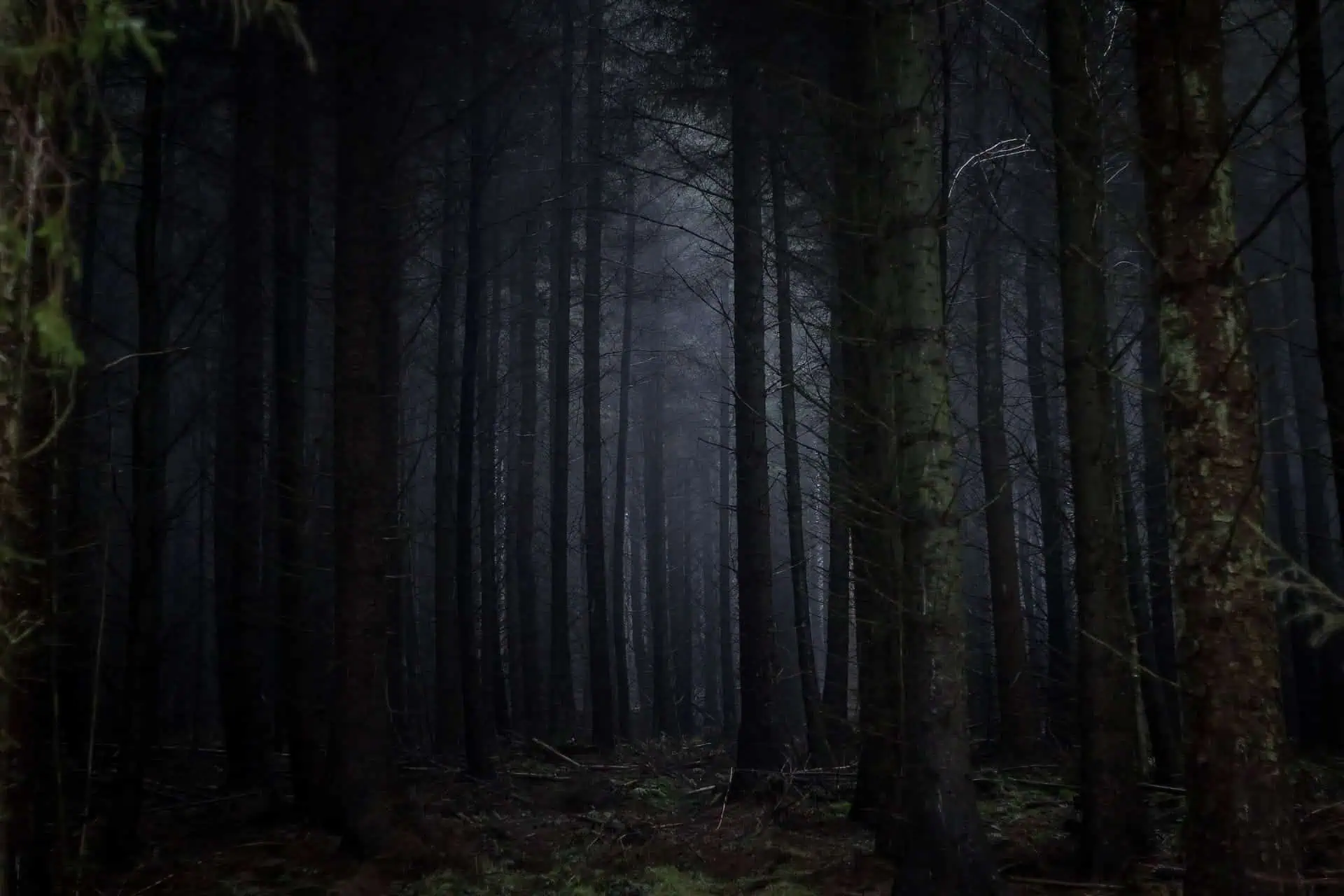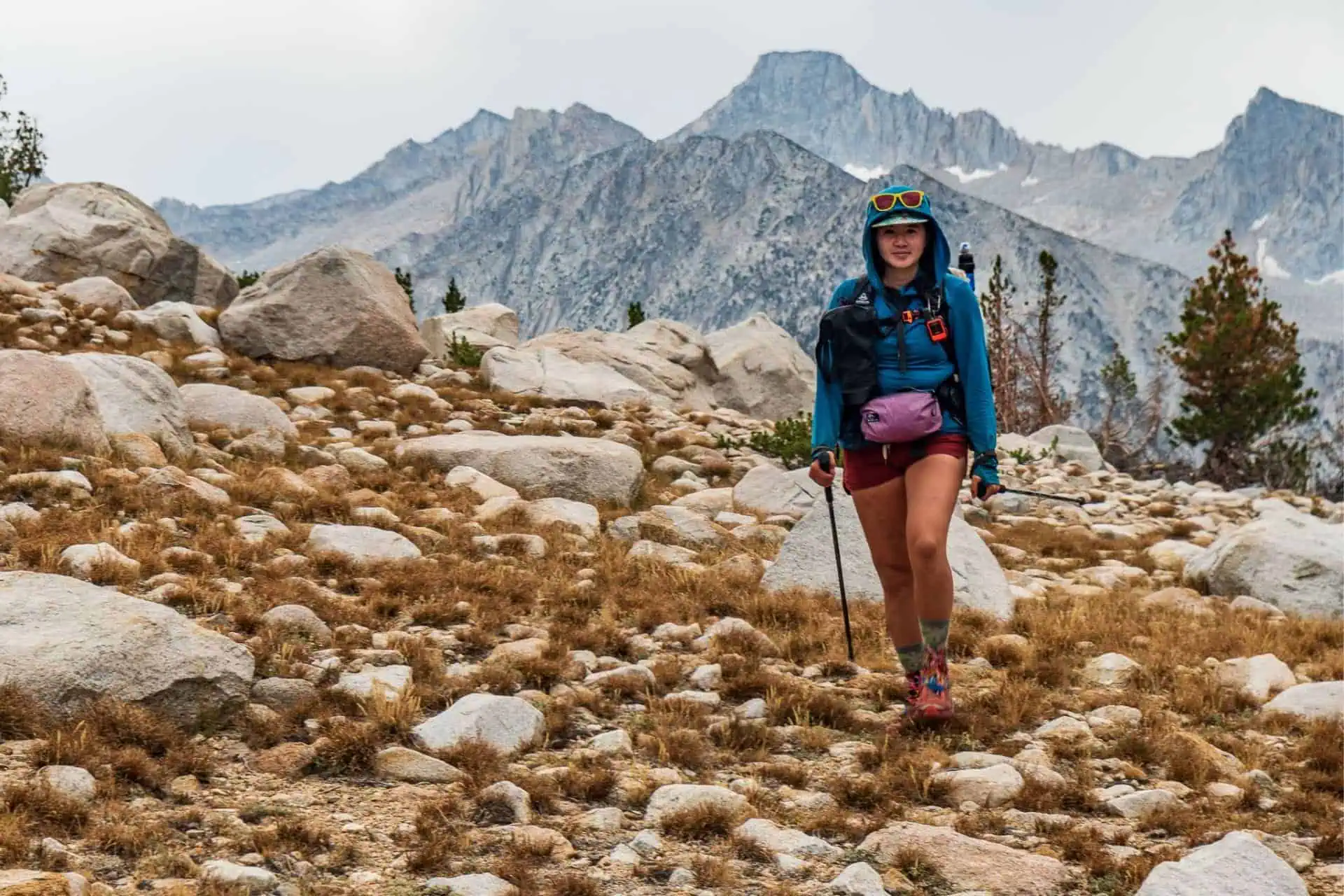The Pacific Crest Trail Gear Guide (2023 Survey)
In the second installment of this year’s Pacific Crest Trail Thru-Hiker Survey, we dive into gear for hiking the PCT. Pacific Crest Trail gear lists vary wildly between hikers, and (spoiler alert) finding a perfect PCT gear list is impossible. That said, we can try.
I’ve organized this in a way that I hope will give a comprehensive picture of what gear PCT thru-hikers are using. This post covers the highest-rated gear, the most common gear, base weights, gear advice, and more.
The gear covered here includes backpacks, shelters, sleeping bags, sleeping pads, insulated jackets, rain jackets, fleeces, shoes, socks, stoves, water treatment, trekking poles, ice axes, traction systems, bear canisters, satellite messengers/PLBs, fitness trackers, luxury items, and more.
I will publish additional articles breaking down the women-specific gear and the gear used by couples hiking the PCT. I am sure some of you will come up with comparisons you would like to see that I have overlooked.
I’ve tweaked the layout this year; instead of having two tables (generally) repeating the same gear in a different order (one with the most common and another with the highest rated), I have a single sortable table with the most common and highest rated stats.
As always, the goal is for this to be a useful resource for PCT hikers, so if there’s anything you think is missing, please leave a comment below. Now for this year’s Pacific Crest Trail Gear Guide by the PCT Class of 2023.

Notes on the Data
- This year, there were 751 completed surveys. Hiking next year? Sign up to take the survey here.
- Some responses are sorted and colored – e.g., northbound or southbound. More on this below.
- The Pacific Crest Trail and thru-hiking generally use acronyms and jargon. If anything is unclear, the thru-hiker glossary may help. Please comment if you still can’t find what you’re looking for.
- I ask that respondents do their best to respond accurately. Not every hiker answers every question, and not every answer is guaranteed 100% accurate (e.g., someone may report having a base weight of 14.6 instead of 14 pounds).
- I refer to survey respondents collectively as this year’s “class.” Remember, this is a sample (albeit a large one) and not a comprehensive survey of every person on the PCT.
- These results invoke basic statistics. To maximize your time here, familiarize yourself with average, median (M), and standard deviation (σ).
- For stats requiring the length of the PCT for a calculation (e.g., mileage/day), I use 2,655.2 mi / 4,273.1 km (from the FarOut Guides PCT app).
- More detailed posts focused on women-specific gear, couples’ gear, PCT resupply, PCT demographics, PCT horror stories, and PCT advice will be available soon (if they aren’t already). If you would like to be notified of new surveys, click here.
Notes on the Gear
- Backpacks: For weights/stats, I use capacities closest to 55 liters (if multiple options are available) based on this year’s average of 54.6 liters.
- Backpacks: The Osprey Exos and the Osprey Eja are the same pack but in a men’s and women’s version. These packs have been combined into a single pack where it makes sense.
- Backpacks: The Hyperlite Mountain Gear Southwest, Windrider, and Junction are all the same backpack but with different exterior pocket material combinations. These packs have been combined into a single pack where it makes sense.
- Shelters: I have omitted shelters shared by hikers from the highest-rated shelters list, as the majority of hikers on the PCT this year were not sharing a tent. I’ll cover shared shelters in the upcoming couples’ gear article.
- Sleeping bags and quilts: For weights/stats, I use the highest fill power available and the temperature rating closest to 20°F/-6°C (if multiple options are available) based on this year’s average of 17.5°F/-8.1°C.
- Sleeping pads: Therm-a-Rest has released a new version of their sleeping pads, the NXT line, since the last survey. The women’s version of the XLite has been discontinued and rolled into the new version. Therm-a-Rest sleeping pad models have been combined where it makes sense to do so. I’ve also stopped treating the short versions of the pads as different products. The pads’ MAX (i.e., rectangular versions) are still treated as separate.
- Insulated jackets: I’ve left the jacket and hoodie/hoody versions of jackets separate for now, but I am considering combining them in future years. If you have any thoughts on this, please let me know.
- Ice axes: For weights/stats, I use the length closest to 60 cm (if multiple options are available).
- Highest-rated gear: Only gear used and rated by at least ten hikers is assigned an average rating. If a piece of gear does not have a rating, it was used and/or rated by fewer than ten hikers.
- All ratings listed are the average (on a scale of 1 to 10) from each hiker who rated the piece of gear.
Data Labels
- Thru-Hikers: Thru-hikers
- Thru-Hikers (0): Thru-hikers who didn’t complete the PCT
- Thru-Hikers (1): Thru-hikers who completed the PCT
- Northbound: Northbound thru-hikers
- Southbound: Southbound thru-hikers
Most Common PCT Gear
I asked each survey respondent about the gear they used during their Pacific Crest Trail hike. With this information, we can see the most popular gear on the trail.
Here’s what this year’s “Most Common PCT Gear List” backpack had (and what that theoretical backpack was).
- Backpack*: ULA Circuit (2.29 lbs / 1.038 kg)
- Shelter: Zpacks Duplex (1.16 lbs / 525 g)
- Sleeping bag: Enlightened Equipment Enigma (21.2 oz / 601 g)
- Sleeping pad: Therm-a-Rest NeoAir XLite NXT (13 oz / 369 g)
- Insulated jacket: Mountain Hardwear Ghost Whisperer 2/Hoody – Men’s/Women’s (8.8 oz / 250 g)
- Shell: Frogg Toggs Ultra-Lite2 Poncho (8.8 oz / 250 g)
- Fleece: Senchi Designs Alpha 90 Hoodie w/ Pocket (4.5 oz / 128 g)
- Shoes: Altra Lone Peak – Men’s/Women’s (22 oz / 624 g)
- Socks: Darn Tough Hiker Quarter Midweight – Men’s/Women’s (2 oz / 57 g)
- Stove: MSR PocketRocket 2 (2.4 oz / 68 g)
- Water treatment: Sawyer Squeeze (3 oz / 85 g)
- Bear canister: BearVault BV500 (41 oz / 1.162 kg)
- Trekking poles: Black Diamond Alpine Carbon Cork (17.1 oz / 485 g)
- PLB: Garmin inReach Mini 2 (3.5 oz / 100 g)
- Ice axe: C.A.M.P. USA Corsa (7.1 oz / 201 g)
- Traction device: Kahtoola MICROspikes (11.9 oz / 337 g)
- Umbrella: Gossamer Gear Lightrek Hiking (Chrome) Umbrella (6.3 oz / 179 g)
- Fitness tracker: Garmin Fenix (2.79 oz / 79 g)
Total weight – Big 3 (pack, shelter, sleeping bag): 4.78 lbs / 2.166 kg
Total weight – Big 4 (Big 3 + sleeping pad): 5.59 lbs / 2.534 kg
All gear (outside Sierra)**: 7.92 lbs / 3.594 kg
All gear***: 11.67 lbs / 5.294 kg
*Combining the Hyperlite Mountain Gear Packs (Southwest, Windrider, and Junction) into a single pack makes this the most common pack on the PCT this year.
**This does not include ice axe, traction, bear canister, trekking poles, shoes, socks, or fitness tracker
***This does not include trekking poles, shoes, socks, or fitness tracker
In addition to the items noted above, these total base weights (a backpack’s weight minus food, water, and consumables – like poop paper) are missing a few pieces of gear (headlamp, extra clothing, electronics, etc.).
This brings us over halfway to the year’s average starting base weight of 17.6 lbs / 7.983 kg. Note that the stove included in this list, the MSR PocketRocket 2, does not include the weight of a pot.
What is the total price of all this gear? $3,201 (with one pair of shoes and one pair of socks); I did not include the $650 price tag of the Garmin Fenix since most thru-hikers did not have a fitness tracker. What was the average thru-hikers spent on gear before beginning their hikes? $1,728 (M = $1,500 | σ = $1,173).
Highest-Rated Gear List
In addition to asking each Pacific Crest Trail hiker what gear they used, I asked hikers to rate each piece of gear. No point in doing what everyone else is doing if none of them are happy with their choices, right? I’ve also used the results to construct a top-ten list for each category surveyed.
Here’s what this year’s “Highest-Rated PCT Gear List” backpack had (and what that theoretical backpack was).
- Backpack: Atom Packs Prospector (32.1 oz / 910 g)
- Shelter*: Big Agnes Tiger Wall UL2 (2.19 lbs / 993 g)
- Sleeping bag/quilt: Feathered Friends Flicker UL (1.58 lb / 715 g)
- Sleeping pad: Therm-a-Rest NeoAir XTherm NXT (16 oz / 454 g)
- Insulated jacket: Mountain Hardwear Ghost Whisperer UL Hoody – Men’s/Women’s (6.7 oz / 189 g)
- Shell: Montbell Versalite – Men’s/Women’s (6.4 oz / 182 g)
- Fleece: LightHeart Microgrid Hoodie – Men’s/Women’s (11.7 oz / 332 g)
- Shoes: Merrell Moab – Men’s/Women’s (33 oz / 936 g)
- Socks: Darn Tough Hiker Micro Crew Midweight – Men’s/Women’s (2.7 oz / 77 g)
- Stove: Snow Peak GigaPower 2.0 (4.23 oz / 120 g)
- Water treatment: Platypus QuickDraw (2.2 oz / 62 g)
- Bear canister: Bearikade Weekender (32 oz / 907 g)
- Trekking poles: Black Diamond Alpine Carbon Cork (17.14 oz / 486 g)
- PLB: Garmin inReach Mini 2 (3.5 oz / 100 g)
- Ice axe: Petzl Glacier Literide (11.3 oz / 320 g)
- Traction: Snowline Chainsen Light (8.6 oz / 243 g)
- Fitness tracker: Garmin Fenix (2.79 oz / 79 g)
*The highest-rated shelter on the Pacific Crest Trail was the Big Agnes Copper Spur HV UL3, rated 9/10. However, this tent wasn’t used by solo hikers (who represent the majority of PCT hikers and survey respondents). I’ve decided that couples’ shelter data should be removed from the top-rated shelters portion of the guide. Check out the PCT Couples’ Gear Guide for more on couples’ gear.
Total weight – Big 3 (pack, shelter, sleeping bag): 5.77 lbs / 2.618 kg
Total weight – Big 4 (Big 3 + sleeping pad): 6.97 lbs / 3.163 kg
All gear (outside Sierra)**: 9.14 lbs / 4.148 kg
All gear***: 12.39 lbs / 5.618 kg
Keen readers may have noticed there is no umbrella listed here. This is because I did not ask hikers to rate their umbrellas. Perhaps I should have. However, I did ask in which sections they carried their umbrellas. This information will be covered below.
**This does not include ice axe, traction, bear canister, trekking poles, shoes, socks, or fitness tracker
***This does not include trekking poles, shoes, socks, or fitness tracker
In addition to the items noted above, these total base weights (a backpack’s weight minus food, water, and consumables – like poop paper) are missing a few pieces of gear (headlamp, extra clothing, electronics, etc.). It brings us over halfway to the year’s average starting base weight of 17.6 lbs / 7.983 kg. Note that the stove included in this list, the Snow Peak GigaPower 2.0, does not include the weight of a pot.
What is the total price of all this gear? $3,660 (with one pair of shoes and one pair of socks); I did not include the $700 price tag of the Garmin Fenix since most thru-hikers did not have a fitness tracker. What did the average thru-hikers spend on gear before beginning their hikes? $1,563 (M = $1,200 | σ = $1,230).
Backpacks
One thing everyone definitely (probably?) needs if they’re going on an extended backpacking trip? A backpack.
A backpack can do a lot to define a hiker, and you can usually tell a lot (or at least think you can tell a lot) about a hiker by simply looking at their pack. This first section will examine backpack stats and the most common/highest-rated backpacks among Pacific Crest Trail hikers this year.
Here is the average backpack size used by thru-hikers.
Thru-Hikers
54.6
(M = 55 | σ = 10.3)
Thru-Hikers (1)
53.8
(M = 55 | σ = 10.2)
Thru-Hikers (0)
56.4
(M = 58 | σ = 10.2)
Hikers’ most common complaints when it came to backpacks this year?
Packs were uncomfortable with heavy loads, and packs were too heavy (as in the packs themselves). This is tricky as, generally, the heavier packs carry heavier loads better, but there’s always a tipping point when you’re carrying that load all day, every day.
Perhaps the lesson is don’t buy a minimalist ultralight pack to lighten your base weight. Perhaps the weight is better cut elsewhere. But don’t let me tell you what to do; I’m sure you’ll figure it out.
Most Common PCT Backpacks
The ULA Circuit was the most common backpack on the Pacific Crest Trail this year – for the fourth year. It is a 2.29 lb / 1.038 kg pack capable of carrying up to 68 L and 35 lbs / 16 kg of gear. The Circuit was also the second-highest-rated pack by PCT hikers this year.
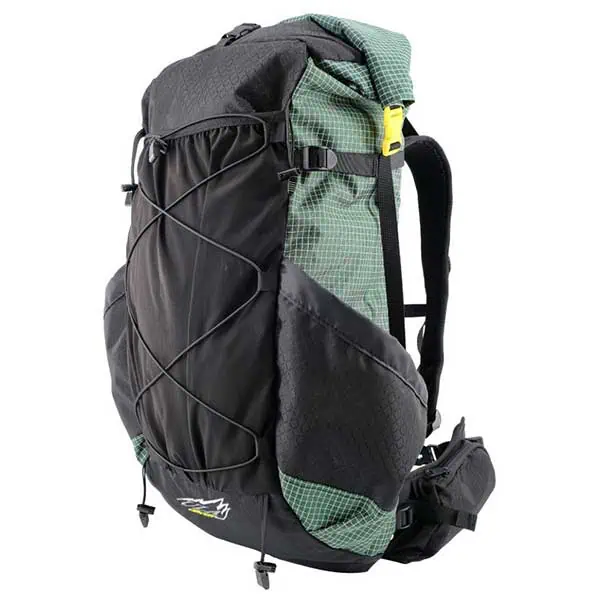
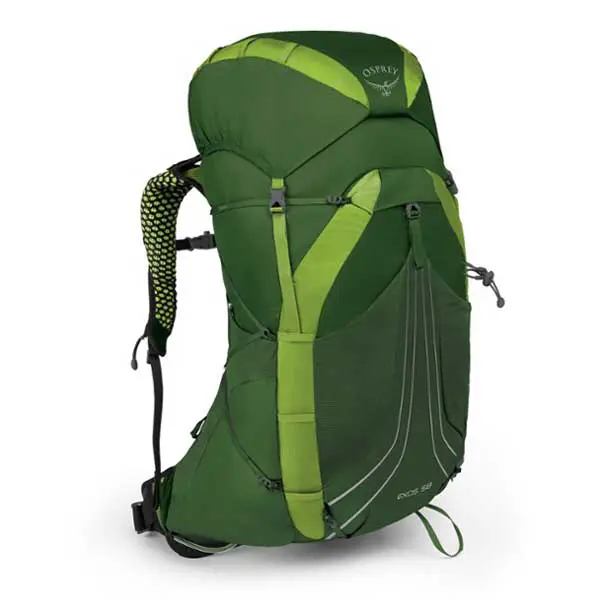
Highest-Rated PCT Backpacks
The Atom Packs Prospector was the highest-rated pack on the PCT this year. This is the pack’s first appearance on the top PCT packs (although we’ve seen the Atom Packs Pulse in the past). It’s a highly customizable pack that weighs 32.1 oz/ 910 g (although this varies based on configuration) and has a base price of $289. This pack’s maximum recommended base weight (not total load) is 22 lb / 10 kg.

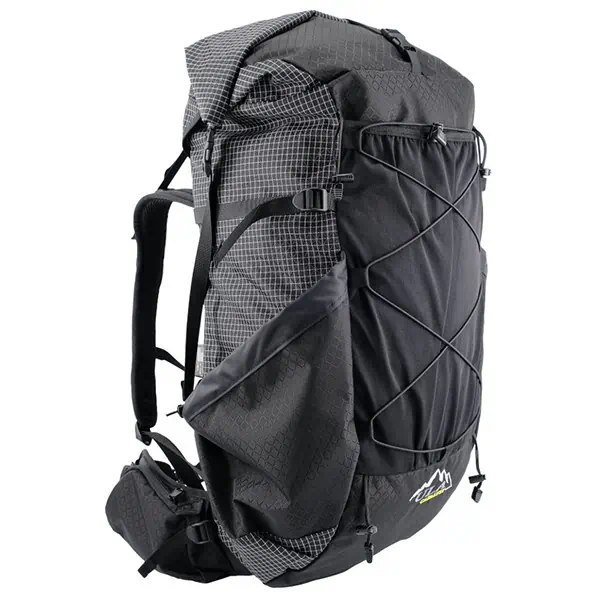
PCT Backpack Breakdown
| Popularity | Rating | Backpack | Price | Weight | Liters | Max Load |
|---|---|---|---|---|---|---|
| 1 | 8.75 | ULA Circuit | $280 | 2.33 lb | 1.06 kg | 68 | 35 lb | 16 kg |
| 2 | 8.43 | Hyperlite Mountain Gear Junction | $379 | 1.98 lb | 897 g | 55 | 40 lb | 18 kg |
| 3 | 8.08 | Osprey Exos | $260 | 2.84 lb | 1.29 kg | 58 | 35 lb | 16 kg |
| 4 | 8.20 | Gossamer Gear Mariposa | $285 | 1.84 lb | 834 g | 60 | 35 lb | 16 kg |
| 5 | 7.75 | Osprey Atmos AG/Aura AG | $340 | 4.32 lb | 1.96 kg | 50 | 35 lb | 16 kg |
| 6 | 9.04 | Atom Packs Porspector | $289 | 2.01 lb | 910 g | 50 | 42 lb | 19 kg |
| 7 | 8.12 | Durston Gear Kakwa | $260 | 1.94 lb | 890 g | 55 | 45 lb | 20 kg |
| 8 | 7.87 | Zpacks Arc Haul | $399 | 1.29 lb | 584 g | 50 | 40 lb | 18 kg |
| 9 | 8.70 | ULA Catalyst | $300 | 2.78 lb | 1.26 kg | 75 | 40 lb | 18 kg |
| 10 | 7.20 | Zpacks Arc Blast | $375 | 1.25 lb | 565 g | 58 | 35 lb | 16 kg |
| 11 | 8.36 | REI Co-op Flash Men's/Women's | $199 | 2.81 lb | 1.27 kg | 55 | 30 lb | 14 kg |
| 12 | 8.50 | Gossamer Gear Gorilla | $255 | 1.78 lb | 809 g | 50 | 30 lb | 14 kg |
Shelters
Shelters – essentially the umbrella term for tents because there are also options such as bivy sacks, tarps, pyramids, and lean-tos – are another essential piece of Pacific Crest Trail gear. A consideration for hikers when choosing their shelter is whether they would like said shelter to be freestanding.
What is a freestanding shelter? It’s a shelter that needs only the tent body and its poles to be set up – no stakes or superfluous tie-outs required. An example of this kind of shelter is the year’s second-highest-rated shelter, the Big Agnes Copper Spur HV UL2.
Shelters that are not freestanding must be staked or tied out to be set up properly. These shelters typically (but not always) use trekking poles instead of the more traditional tent poles to be set up – something to consider when considering shelter weights and prices. An example of this kind of shelter is the year’s most common shelter, the Zpacks Duplex.
Lastly, a semi-freestanding shelter is one that (typically) uses tent poles and can stand on its own, but that requires at least one stake or tie-outs to be completely set up. An example of this kind of shelter is the year’s highest-rated shelter, the Big Agnes Tiger Wall UL2.
Shelter Type
The percentage of hikers using each type of shelter on the Pacific Crest Trail.
- 60.0% – Non-freestanding
- 21.7% – Semi-freestanding
- 15.4% – Freestanding
- 2.1% – Tarp
- 0.7% – Hammock
- 0.1% – Bivy
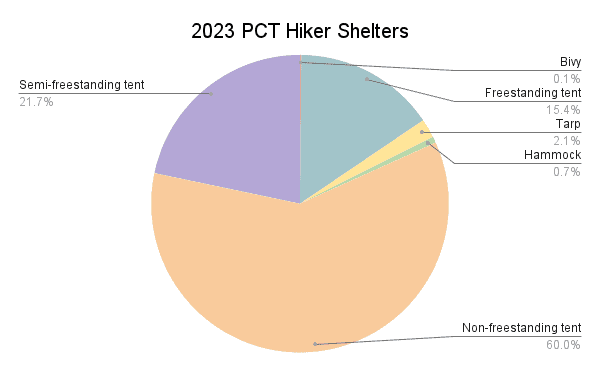
Two of the top ten most common shelters, the Big Agnes Copper Spur HV UL1 and Copper Spur HV UL2, are freestanding.
Two others, the NEMO Equipment Hornet OSMO 2 and the Big Agnes Tiger Wall UL2, are semi-freestanding. This means they can stand independently without stakes but require stakes to be set up fully/properly.
The remaining six are not freestanding.
Most Common PCT Shelters
The Zpacks Duplex was the most common shelter on the PCT this year (for the third year). It’s a $669, two-person, side-entry, 18.5 oz / 525 g shelter requiring two trekking poles to set up. It’s made from .55 oz/yd² Dyneema Composite Fabric and requires at least six stakes to set up (not included in the $670 price tag).
Highest-Rated PCT Shelters
The Big Agnes Tiger Wall UL2 was the highest-rated shelter on the PCT this year. It’s a two-person, side-entry shelter that weighs 2.19 lb / 993 g and requires two stakes to set up properly (not including the fly). Despite being a two-person shelter, it was used frequently by solo hikers. There is also a one-person version available.
PCT Shelter Breakdown
| Popularity | Rating | Shelter | Price | Weight | Floor | Freestanding | Capacity |
|---|---|---|---|---|---|---|---|
| 1 | 8.55 | Zpacks Duplex | $669 | 1.16 lb | 525 g | 28 ft² / 2.6 m² | No | 2 |
| 2 | 8.70 | Durston Gear X-Mid 1 | $240 | 1.75 lb | 795 g | 20 ft² / 1.85 m² | No | 1 |
| 3 | 8.59 | Durston Gear X-Mid 2 | $280 | 2.21 lb | 1.005 kg | 33.2 ft² / 3.1 m² | No | 2 |
| 4 | 8.84 | Big Agnes Tiger Wall UL2 | $450 | 2.19 lb | 993 g | 28 ft² / 2.6 m² | Semi | 2 |
| 5 | 8.46 | NEMO Equipment Hornet OSMO 2 | $430 | 2.09 lb | 948 g | 27.5 ft² / 2.6 m² | Semi | 2 |
| 6 | 7.61 | Gossamer Gear The One | $255 | 1.11 lb | 503 g | 15.8 ft² / 1.5 m² | No | 1 |
| 7 | 8.80 | Zpacks Plex Solo | $599 | 0.87 lb | 395 g | 20.6 ft² / 1.91 m² | No | 1 |
| 8 | 8.83 | Big Agnes Copper Spur HV UL1 | $450 | 2.12 lb | 962 g | 20 ft² / 1.85 m² | Yes | 1 |
| 9 | 8.21 | Big Agnes Copper Spur HV UL2 | $550 | 2.69 lb | 1.22 kg | 29 ft² / 2.7 m² | Yes | 2 |
| 10 | 7.50 | Big Agnes Fly Creek HV UL2 | $400 | 1.94 lb | 879 g | 28 ft² / 2.6 m² | Semi | 2 |
| 11 | 8.53 | Six Moon Designs Lunar Solo | $260 | 1.63 lb | 740 g | 26 ft² / 2.4 m² | No | 1 |
| 12 | 8.33 | Durston Gear X-Mid Pro 2 | $639 | 1.26 lb | 570 g | 28.75 ft² / 2.7 m² | No | 2 |
| 13 | 6.38 | Gossamer Gear The Two | $320 | 1.47 lb | 667 g | 26.25 ft² / 2.44 m² | No | 2 |
| 14 | 8.42 | Zpacks Altaplex | $669 | 0.96 lb | 437 g | 22.5 ft² / 2.09 m² | No | 1 |
| 15 | 8.73 | Durston Gear X-Mid Pro 1 | $549 | 1.08 lb | 490 g | 20 ft² / 1.9 m² | No | 1 |
Note: The Durston Gear X-Mid Pro 1 and X-Mid Pro 2 are available in woven and Dyneema versions with or without stakes. The data above reflects the woven versions without stakes.
Sleeping Bags & Quilts
Is there a generic term for sleeping bags and quilts? Sleeping sacks? Insulation-filled backpacking tortillas? Writing sleeping bags/quilts is a bit excessive/unnecessary feeling. Suggestions welcome.
Quilts have become the unofficial standard in thru-hiker kits; four of the top five most common insulation-filled backpacking tortillas were quilts. That said, many quilts come in a variety of temperature ratings and are, many times, largely customizable.
Individual hiker temperature needs can vary greatly. How warm of a sleeper are you? Which sleeping pad do you have? Do you sleep in your clothes? With another person? In a small tent? A big tent? With a dog? Bigfoot?
The typical range for PCT sleeping bags and quilts is between 10°F and 20°F (-12.2°C to -6.7°C). Which bag will be best for you depends. Here’s what this year’s class had.
Thru-Hikers
17.5°F
-8.4°C
(M = 20°F/-6.7°C | σ = 7.9)
Average sleeping bag temperature
Thru-Hikers
58.3%
Percentage of hikers using a quilt
Thru-Hikers
20.1°F
-6.6°C
Average temperature of hiker bag/quilt who wanted something warmer
Most Common PCT Sleeping Bags
This year, the Enlightened Equipment Enigma was the PCT’s most common sleeping bag (quilt). The Enigma is highly customizable and comes in various lengths, widths, temperature ratings, fill powers, and colors. What’s the difference between the Enigma and the Revelation? The Enigma has a sewn foot box (i.e., the Revelation can be laid completely flat).
Highest-Rated PCT Sleeping Bags & Quilts
This year, the Feathered Friends Flicker UL was the PCT’s highest-rated sleeping bag or quilt. The regular-length, 20°F / -6.6°C model weighs 1.58 lb / 715 g and costs $529. It has a full-length center zipper and uses 950+ fill power goose down and Pertex Endurance fabric. It’s available in three temperature ratings, four colors, and a long version.
PCT Sleeping Bag & Quilt Breakdown
| Popularity | Rating | Bag/Quilt | Price | Weight | Temperature | Fill | Fill Weight |
|---|---|---|---|---|---|---|---|
| 1 | 9.15 | Enlightened Equipment Enigma | $430 | 1.32 lb | 601 g | 20°F / -6.7°C | 950 duck | 13.83 oz / 392 g |
| 2 | 8.94 | Enlightened Equipment Revelation | $420 | 1.2 lb | 544 g | 20°F / -6.7°C | 950 duck | 14.4 oz / 408 g |
| 3 | 9.02 | Katabatic Flex | $430 | 1.42 lb | 646 g | 22°F / -5.6°C | 900 goose | 14.3 oz / 405g |
| 4 | 8.38 | REI Co-op Magma | $429 | 2.22 lb | 1006 g | 15°F / -9°C | 850 goose | 23.3 oz / 660 g |
| 5 | 8.48 | Hammock Gear Economy Burrow | $320 | 1.57 lb | 710 g | 20°F / -6.7°C | 850 goose | N/A |
| 6 | 8.95 | UGQ Bandit | $395 | 1.5 lb | 680 g | 20°F / -6.7°C | 950 goose | N/A |
| 7 | 8.94 | Western Mountaineering Versalite | $720 | 2 lb | 907 g | 10°F / -12.2°C | 850 goose | 20 oz / 565 g |
| 8 | 7.81 | Sea to Summit Spark | $382 | 1.47 lb | 667 g | 18°F / -7.8°C | 850 goose | 15.2 oz / 431 g |
| 9 | 6.44 | Zpacks Classic Sleeping Bag | $449 | 1.18 lb | 533 g | 20°F / -6.7°C | 900 goose | 14.5 oz / 411 g |
| 10 | 9.20 | Katabatic Alsek | $430 | 1.39 lb | 629 g | 22°F / -5.6°C | 900 goose | 13.4 oz / 380 g |
| 11 | 9.23 | Cumulus Quilt | $299 | 1.56 lb | 710 g | 19°F / -7.2°C | 850 goose | 15.87 oz / 450 g |
| 12 | 8.83 | Sea to Summit Flame | $359 | 1.47 lb | 667 g | 25°F / -3.9°C | 850 goose | 15.5 oz / 439 g |
| 13 | 8.75 | Western Mountaineering UltraLite | $620 | 1.88 lb | 853 g | 20°F / -6.7°C | 850 goose | 16 oz / 454 g |
| 14 | 9.82 | Feathered Friends Flicker UL | $529 | 1.58 lb | 715 g | 20°F / -6.7°C | 950 goose | 14.7 oz / 417 g |
| 15 | 8.91 | Katabatic Sawatch | $470 | 1.54 lb | 700 g | 15°F / -9.4°C | 900 goose | 16.6 oz / 471 g |
Sleeping Pads
Sleeping pads are another must-have item on the Pacific Crest Trail. Hikers have two options: an inflatable or foam sleeping pad.
There are pros and cons to both. Foam pads can’t pop, can be easily deployed, aren’t noisy, and make acceptable LARPing weapons; inflatable pads pack down small, have higher R-values (i.e., they’re warmer), can (sometimes) be lighter, and make acceptable rafts.
Which sleeping pad is best depends on your personal needs and, in some cases, how much durability you’re willing to sacrifice to save weight. Most PCT hikers used inflatable sleeping pads, with 43% using some Therm-a-Rest NeoAir XLite NXT version (regular, small, or the now-discontinued women’s).
The percentage of hikers using each style of sleeping pad on the Pacific Crest Trail this year.
- 88.3% – Inflatable
- 11.7% – Foam
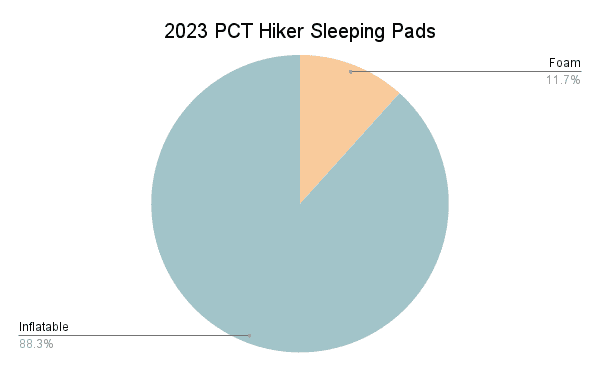
Most Common PCT Sleeping Pads
This year, the Therm-a-Rest NeoAir XLite NXT was the most common sleeping pad on the Pacific Crest Trail. In size regular, this air pad has an R-value of 4.5, weighs 13 oz / 369 g, packs to 4.1 x 9 in / 10 x 23 cm, and is 3 in / 7.6 cm thick. It’s also available in short, wide, and large sizes.
Highest-Rated PCT Sleeping Pads
The Therm-a-Rest NeoAir XTherm NXT was the highest-rated sleeping pad from the PCT this year. The 30D-nylon pad has an R-value of 7.3, is 3 in / 7.6 cm thick, weighs 16 oz / 454 g, and retails for $240. It comes in two color options and regular, wide, or long versions.
PCT Sleeping Pad Breakdown
| Popularity | Rating | Sleeping Pad | Price | Weight | R-Value | Thickness |
|---|---|---|---|---|---|---|
| 1 | 8.73 | Therm-a-Rest NeoAir XLite NXT | $210 | 13 oz | 369 g | 4.5 | 3 in / 7.6 cm |
| 2 | 8.57 | NEMO Equipment Tensor (Insulated) | $200 | 14.5 oz | 411 g | 4.2 | 3 in / 7.6 cm |
| 3 | 9.07 | Therm-a-Rest NeoAir XTherm NXT | $240 | 16 oz | 454 g | 7.3 | 3 in / 7.6 cm |
| 4 | 8.43 | NEMO Equipment Switchback | $55 | 14.5 oz | 415 g | 2 | 0.9 in / 2.3 cm |
| 5 | 8.00 | Therm-a-Rest Z Lite SOL | $58 | 14 oz | 397 g | 2 | 0.75 in / 1.9 cm |
| 6 | 8.00 | Sea to Summit UltraLight Insulated | $159 | 16.9 oz | 480g | 3.1 | 2 in / 5 cm |
| 7 | 6.83 | Therm-a-Rest NeoAir UberLite | $230 | 8.8 oz | 250 g | 2.3 | 2.5 in / 6.4 cm |
Insulated Jackets
Something to keep the top half of your body warm – whether this is a base layer, a fleece, or an insulated jacket – is something else every Pacific Crest Trail hiker should have with them. Of this year’s class, 94.9% had an insulated jacket – meaning 5.1% said they didn’t bring one.
“Insulated jacket” because “down jacket” isn’t accurate since not all jackets use down insulation and because the word “puffy” isn’t quite official – also, I don’t know whether to spell the plural “puffys” or “puffies.” They both look weird.
Many of the most popular insulated jackets have hooded and non-hooded versions. Typically, the hoodless versions are called “jackets,” while the hooded versions are called hoodies (e.g., Mountain Hardwear Ghost Whisperer/2 Jacket vs. Mountain Hardwear Ghost Whisperer/2 Hoody).
The percentage of hikers using a hoody versus those using a jacket (without a hood) on the Pacific Crest Trail.
- 78.1% – Hoody
- 21.9% – Jacket (no hood)
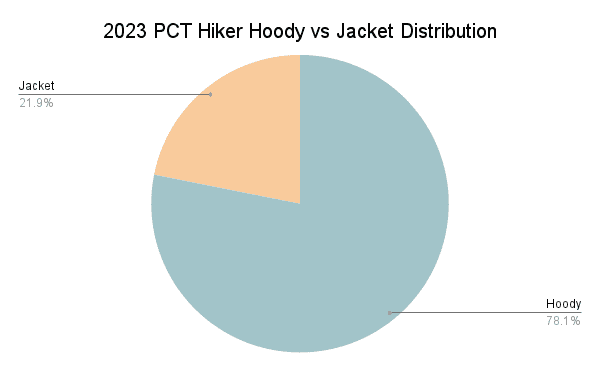
Most Common PCT Insulated Jackets
This year, the Mountain Hardwear Ghost Whisperer/2 Hoody (Men’s/Women’s) was the most common jacket on the Pacific Crest Trail. The 800-fill, 8.8 oz / 249 g jacket has a 10D ripstop shell, two zippered hand pockets, and synthetic insulation in the first baffle at both cuffs to prevent wetting out. This year, the jacket and UL versions of the Ghost Whisperer/2 were also popular among PCT hikers.
Highest-Rated PCT Insulated Jackets
This year, the Mountain Hardwear Ghost Whisperer UL (Men’s/Women’s) was the highest-rated insulated jacket on the Pacific Crest Trail. The hoody is remarkably lightweight and packable with 1000-fill goose down and weighing just 6.7 oz / 189 g. It has elastic cuffs, synthetic insulation in the first baffle of each cuff, and two zippered hand pockets. There is only a hooded option for this jacket available.
| Popularity | Rating | Insulated Jacket | Price | Weight | Hood | Pockets |
|---|---|---|---|---|---|---|
| 1 | 8.87 | Mountain Hardwear Ghost Whisperer/2 Hoody (M/W) | $360 | 8.8 oz | 249 g | Yes | 2 hand |
| 2 | 9.30 | Enlightened Equipment Torrid (M/W) | $200 | 8.4 oz | 238 g | Yes | 2 hand |
| 3 | 9.13 | Patagonia Micro Puff Hoody (M/W) | $329 | 10.5 oz | 298 g | Yes | 2 hand | 2 drop |
| 4 | 8.97 | Decathlon Forclaz Trek 100 (M/W) | $100 | 10.2 oz | 290 g | Yes | 2 hand |
| 5 | 9.12 | Patagonia Nano Puff Hoody (M/W) | $289 | 12.8 oz | 363 g | Yes | 2 hand | 1 internal chest |
| 6 | 9.74 | Mountain Hardwear Ghost Whisperer UL (M/W) | $420 | 6.7 oz | 189 g | Yes | 2 hand |
| 7 | 8.79 | Patagonia Micro Puff Jacket (M/W) | $279 | 10.4 oz | 295 g | No | 2 hand | 2 drop |
| 8 | 8.11 | Patagonia Nano Puff Jacket (M/W) | $239 | 11.9 oz | 337 g | No | 2 hand | 1 internal chest |
| 9 | 8.65 | Patagonia Down Sweater (M/W) | $279 | 13 oz | 369 g | No | 2 hand | 2 drop | 1 internal chest |
| 10 | 8.47 | Rab Microlight Alpine Jacket (M/W) | $295 | 16.1 oz | 456 g | Yes | 2 hand | 1 external chest |
| 11 | 8.75 | Arc'teryx Cerium Hoody (M/W) | $400 | 11.9 oz | 337 g | Yes | 2 hand | 1 internal chest |
| 12 | 8.75 | Mountain Hardwear Ghost Whisperer 2 (M/W) | $330 | 8.3 oz | 236 g | No | 2 hand |
| 13 | 7.27 | REI Co-op 650 (M/W) | $129 | 10.9 oz | 309 g | Yes | 2 hand | 2 drop |
| 14 | 9.62 | Cotopaxi Fuego (M/W) | $295 | 14 oz | 397 g | Yes | 2 hand | 1 internal chest |
| 15 | 8.62 | Montbell Superior (M/W) | $219 | 7.1 oz | 200 g | No | 2 hand | 2 drop |
| 16 | 8.91 | REI Co-op Magma 850 (M/W) | $249 | 12.3 oz | 349 g | Yes | 2 hand | 1 external chest |
| 17 | 8.91 | Arc'teryx Atom Hoody (M/W) | $300 | 13.1 oz | 370 g | Yes | None |
| 19 | 9.30 | Arc’teryx Cerium Jacket (M/W) | $380 | 10.6 oz | 300 g | No | 2 hand | 1 internal chest |
Shells
Shells, or rain jackets, aren’t something that Pacific Crest Trail hikers use every day, but they are also not something that should be completely overlooked. Weather on the PCT can be unpredictable, and getting caught on the trail unprepared in a storm could quickly become life-threatening.
Most Common PCT Shells
This year, the Frogg Toggs Ultra-Lite2 was the most common rainwear on the Pacific Crest Trail. I hesitate to prescribe the title, jacket, or shell since it’s as much an emergency shell as a rain jacket, but it’s popular nonetheless. That said, it has the lowest rating of any piece of rain gear used by PCT hikers this year. I try to remain objective in these guides, but I feel it worth mentioning that if you are looking for something that will actually keep you warm/dry during periods of extended rain, there are far better (albeit more expensive) options available.
Highest-Rated PCT Shells
This year, the Montbell Versalite (Men’s/Women’s) was the highest-rated rainwear on the Pacific Crest Trail. It’s a 6.4 oz / 182 g jacket made with GORE-TEX WINDSTOPPER fabric. It has pit zips, a pocket hem adjuster, and two hand-warmer pockets placed hiker up to not be in the way of a hipbelt, fanny pack, or harness.
PCT Shell Breakdown
| Popularity | Rating | Shell | Price | Weight | Fabric | Pit Zips |
|---|---|---|---|---|---|---|
| 1 | 6.99 | Frogg Toggs Ultra-Lite (M/W) | $30 | 5.5 oz | 156 g | Three-layer polypropylene | No |
| 2 | 7.17 | Outdoor Research Helium (M/W) | $170 | 6.2 oz | 176 g | 2.5-layer Pertex Shield (Nylon) | No |
| 3 | 8.79 | Montbell Versalite (M/W) | $249 | 6.4 oz | 182 g | 2-layer GORE-TEX Infinium Windstopper | Yes |
| 4 | 8.53 | Patagonia Torrentshell (M/W) | $179 | 14.1 oz | 400 g | 3L 3.5-oz 50D ECONYL Recycled Nylon | Yes |
| 5 | 8.15 | Lightheart Gear Rain Jacket | $125 | 6 oz | 170 g | 20D Ripstop Polyester | Yes |
| 6 | 8.75 | Arc’teryx Beta (M/W) | $400 | 10.6 oz | 300 g | GORE-TEX w/ GORE C-KNIT backer | Yes |
| 7 | 8.37 | Zpacks Vertice (M/W) | $299 | 5.4 oz | 152 g | 1.50 oz/yd² Vertice | Yes |
| 8 | 7.68 | Marmot PreCip (M/W) | $100 | 11 oz | 305 g | NanoPro 100% Nylon | Yes |
| 9 | 7.11 | Frogg Toggs Xtreme Lite (M/W) | $60 | 9.65 oz | 274 g | 20D Ripstop Polyester | No |
| 10 | 8.31 | Black Diamond StormLine Stretch (M/W) | $180 | 11.29 oz | 320 g | BD.dry2.5L w/ DWR | Yes |
| 11 | 8.27 | Enlightened Equipment Visp (M/W) | $250 | 6.38 oz | 181 g | 7D nylon + PU membrane + tricot lining | Yes |
Fleeces
Many hikers carry a fleece in addition to or instead of an insulated jacket. They are typically more comfortable to hike in (if you’re using your extra layers for more than just staying warm at camp) and can offer more versatility than a puffy, depending on the situation.
It was a pretty even split among hikers on whether they had a fleece; 61.5% of hikers brought a fleece.
The following breakdown shows the percentage of PCT hikers who brought only a fleece, only an insulated jacket, both, or neither (not recommended).
- 58.6% – Insulated jacket and fleece
- 34.7% – Insulated jacket only
- 3.8% – Fleece only
- 3.0% – Neither
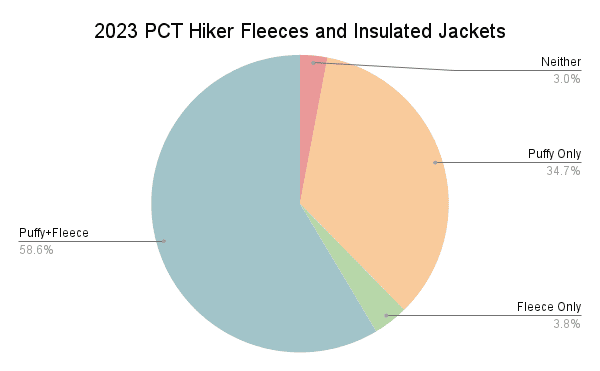
Most Common PCT Fleeces
The most common fleece on the Pacific Crest Trail was the Senchi Designs Alpha 90 Hoodie (formerly known as the Senchi Lark). It’s made with 78% recycled polyester, weighs 4.8 oz / 136 g in a size large (depending on the fabric color), and has a single front kangaroo pocket. The Polartec Alpha Direct 90 fabric is lightweight, stretchy, and semi-transparent. An even lighter-weight version, the Senchi Designs Alpha 60 Hoodie (formerly known as the Wren), was the fourth-most-common fleece on the trail this year.
Highest-Rated PCT Fleeces
This year, the LightHeart Gear Hoodie (Men’s/Women’s) was the highest-rated fleece on the Pacific Crest Trail. This is the fleece’s first appearance on the PCT Gear Survey. It’s made with 100% polyester micro-grid fleece, comes in various color combinations, has a kangaroo pocket and thumb holes, and weighs 11.7 oz / 332 g in a medium size.
PCT Fleece Breakdown
| Popularity | Rating | Fleece | Price | Weight | Fabric | Zip |
|---|---|---|---|---|---|---|
| 1 | 9.43 | Senchi Designs Alpha 90 Hoodie | $95 | 4.5 oz | 128 g | Polartec Alpha Direct 90 | None |
| 2 | 9.29 | Melanzana Microgrid Hoodie | $86 | 12.1 oz | 343 g (L) | Polyester Micro Grid | None |
| 3 | 8.69 | Patagonia R1 Pullover (M/W) | $139 | 11.7 oz | 332 g | 93% Recycled Polyester, 7% Spandex | Quarter |
| 4 | 9.39 | Senchi Designs Alpha 60 Hoodie | $85 | 3.7 oz | 105 g | Polartec Alpha Direct 60 | None |
| 5 | 9.09 | Decathlon Quechua MH100 (M/W) | $20 | 7.5 oz | 213 g (L) | Recycled Polyester | Quarter |
| 6 | 8.94 | Mountain Hardwear AirMesh Hoody (M/W) | $85 | 4.75 oz | 135 g | Polyester | None |
| 7 | 9.18 | KUIU Peloton 97 | $99 | 5.9 oz | 167 g | TORAY Karuishi Fleece | Quarter |
| 8 | 9.50 | Patagonia R1 Air Full-Zip Hoodie (M/W) | $179 | 12.9 oz | 366 g | Recycled Polyester | Full |
| 9 | 8.79 | Macpac Nitro Fleece Pullover (M/W) | $169 NZD | 3.88 oz | 110 g | Polartec Alpha Direct | None |
| 10 | 10.00 | LightHeart Gear Hoodie (M/W) | $99 | 11.7 oz | 332 g | Polyester Micro Grid | None |
| 11 | 8.36 | FarPointe Outdoor Gear Alpha Cruiser | $85 | 4 oz | 113 g (60) 4.9 oz | 139 g (90) | Polartec Alpha Direct 60 or 90 | None |
| 12 | 7.90 | REI Co-op Trailsmith Fleece Jacket (M/W) | $90 | 15.2 oz | 431 g | Polartec Microfleece | Full |
Shoes
Shoes are perhaps one of the most important gear choices for Pacific Crest Trail hikers as they’re what’s literally moving you up the trail. They’re also one of the most individual-specific pieces of gear. Let me get this out of the way now and say there is no such thing as a “best thru-hiking shoe.”
What may be the objective best choice for one person could easily be the objective worst choice for another person. The “best thru-hiking shoes” are the ones that work best for the individual. Don’t be afraid of trying multiple models from multiple brands to find the most comfortable shoe for your foot.
This year, I’m breaking down shoes a bit more. I’ve included the type of shoe used, whether thru-hikers used waterproof shoes, and whether thru-hikers changed their shoe size during their hikes.
Type of Shoe Used
- 88.7% – Low top shoes
- 7.2% – Mid-top shoes
- 2.4% – Boots
- 1.3% – Sandals
- 0.3% – Barefoot shoes
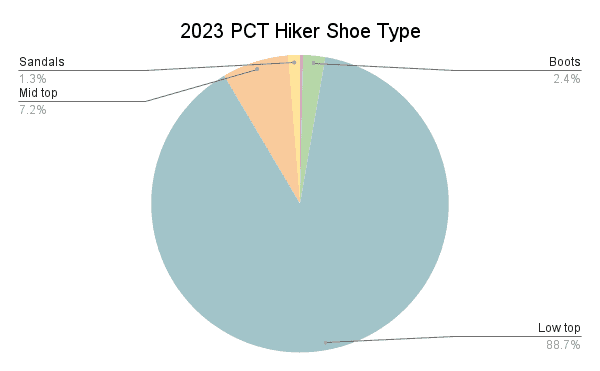
Waterproof Shoe Use
Many shoes commonly used by PCT hikers have waterproof versions available. However, the majority of hikers choose not to use waterproof shoes.
- 93.9% – Not using waterproof shoes
- 6.1% – Using waterproof shoes
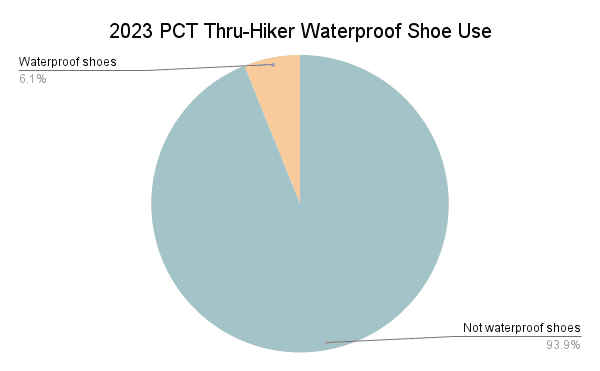
Hiker Shoe Size Changes
It’s commonly recommended that thru-hikers size up their shoes on the PCT, as many people’s feet will swell during a thru-hike. Here’s what this year’s class did.
- 57.2% – Sized up
- 42.1% – Didn’t change shoe size
- 0.6% – Sized down
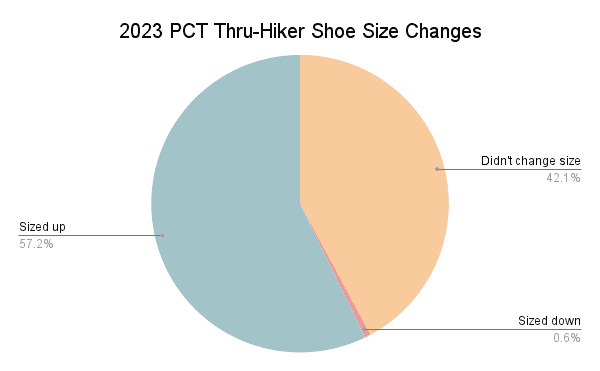
For more on hiking shoes, check out the Best Shoes for Thru-Hiking.
Most Common PCT Shoes
The Altra Lone Peak (Men’s/Women’s) was the most common shoe on the feet of Pacific Crest Trail hikers this year – for the seventh year in a row. They cost $140 per pair, have a 0 mm heel-toe drop, and weigh 21.4 oz / 607 g per pair. On average, thru-hikers (1) used five pairs of these on the trail (4.7 to be exact). Altra frequently releases new versions of the Lone Peak; at the time of publication, the latest is the Lone Peak 8.
Highest-Rated PCT Shoes
This year, the Merrell Moab (Men’s/Women’s) was the highest-rated shoe on the PCT. It’s more a low-cut boot than a trail runner and thus weighs a hearty 33 oz / 936 g and costs $120 per pair. On average, thru-hikers (1) used four pairs of these on the trail (3.3 to be exact). A waterproof version (Men’s/Women’s) is also available. Merrell releases new versions of this shoe infrequently; at the time of publication, the current version is the 3.
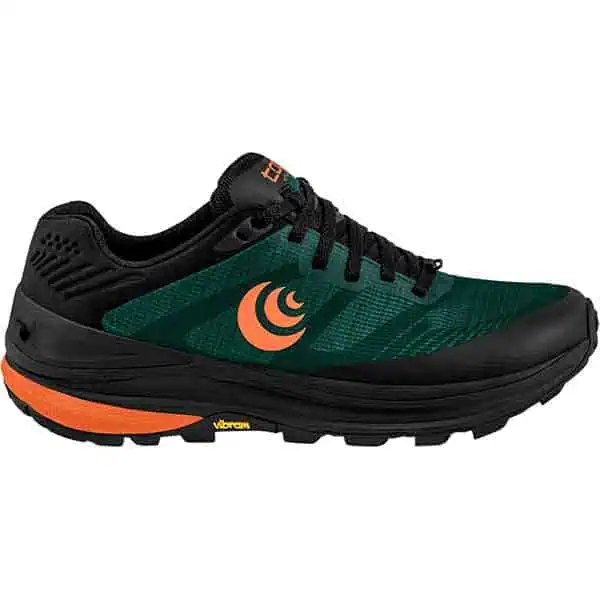
(discontinued)
PCT Shoe Breakdown
| Popularity | Rating | Shoes | Price | Weight | Heel-Toe Drop | Number Used |
|---|---|---|---|---|---|---|
| 1 | 8.00 | Altra Lone Peak (M/W) | $150 | 22 oz | 624 g | 0 mm | 4.70 |
| 2 | 8.43 | HOKA ONE ONE Speedgoat (M/W) | $155 | 20.6 oz | 584 g | 4 mm | 5.00 |
| 3 | 7.43 | Altra Olympus (M/W) | $170 | 24.6 oz | 697 g | 0 mm | 5.09 |
| 4 | 8.91 | Brooks Cascadia (M/W) | $140 | 22 oz | 624 g | 8 mm | 4.39 |
| 5 | 8.62 | Topo Athletic Ultraventure (M/W) | $150 | 20.4 oz | 578 g | 5 mm | 5.28 |
| 6 | 8.55 | Topo Athletic Ultraventure Pro (discontinued) | $150 | 20.8 oz | 590 g | 5 mm | 4.93 |
| 7 | 8.39 | Topo Athletic Terraventure (M/W) | $135 | 20.2 oz | 573 g | 3 mm | 4.09 |
| 8 | 9.13 | Merrell Moab (M/W) | $120 | 33 oz | 936 g | 11.5 mm | 3.33 |
| 9 | N/A | Salomon Speedcross (M/W) | $145 | 21 oz | 596 g | 10 mm | N/A |
| 10 | N/A | Topo MTN Racer (M/W) | $150 | 20.2 oz | 573 g | 5 mm | N/A |
Shoe Notes: Even if you knew that each pair of your shoes would last you 700 mi / 1,125 km, buying yourself four pairs at the start of the hike would be risky – what if the shoes aren’t as comfortable as you thought? What if your feet swell? What if you die?
Remember, once you know that you need a new pair, you can buy shoes and have them mailed ahead on the trail (to a post office, hotel, local outfitter, trail angel, etc.). If you encounter an emergency, you can always buy locally or wait for your shoes to arrive in the mail (this latter happens more than you might imagine).
Socks
After shoes, Pacific Crest Trail hiker socks take the most (if not more) damage from the daily grind of the trail. Darn Tough is the standout sock brand among hikers – occupying four of the top five most common spots and all five of the highest-rated spots.
Hikers love these socks for their comfort and durability and because they’re “Unconditionally Guaranteed for Life.” Basically, wear a hole in your sock(s) while hiking, and you can get a new pair (reasonable exceptions apply, such as fire damage or animal tearing apart). Over 68% of PCT hikers had Darn Tough socks on the trail.
For more on hiking socks, check out the Best Socks for Thru-Hiking.
Most Common PCT Socks
Darn Tough dominated Pacific Crest Trail hiker feet this year, with the Darn Tough Hiker Micro Crew Midweight (Men’s/Women’s) being the most common model. They are made of 61% merino wool, 36% nylon, and 3% spandex; they have a medium cushion, cost $25 a pair, and have an unconditional lifetime guarantee. The second most common sock was the quarter-length version (men’s/women’s) of this sock.
Highest-Rated PCT Socks
Like the most common sock, the Darn Tough Hiker Micro Crew Midweight (Men’s/Women’s) was the highest-rated sock on the Pacific Crest Trail this year. They are made of 61% merino wool, 36% nylon, and 3% spandex; they have a medium cushion, cost $25 a pair, and have an unconditional lifetime guarantee. The fifth-highest-rated sock was the quarter-length version (men’s/women’s) of this sock.
PCT Sock Breakdown
| Popularity | Rating | Socks | Price | Fabric | Cushion | Height |
|---|---|---|---|---|---|---|
| 1 | 9.27 | Darn Tough Hiker Micro Crew Midweight (M/W) | $25 | 61% merino wool, 36% nylon, 3% spandex | Medium | Crew |
| 2 | 9.21 | Darn Tough Hiker Quarter Midweight (M/W) | $22 | 59% merino wool, 38% nylon, 3% spandex | Medium | Ankle |
| 3 | 9.12 | Darn Tough Light Hiker Micro Crew (M/W) | $24 | 54% nylon, 43% merino wool, 3% spandex | Light | Crew |
| 4 | 9.06 | Darn Tough Light Hiker Quarter (M/W) | $21 | 52% nylon, 44% merino wool, 4% spandex | Light | Ankle |
| 5 | 8.44 | Injinji Trail Midweight Mini-Crew (M/W) | $16 | 58% nylon, 39% CoolMax polyester, 3% spandex | Medium | Ankle |
| 6 | 9.24 | Darn Tough Hiker Boot Midweight (M/W) | $27 | 64% merino wool, 33% nylon, 3% spandex | Medium | Crew |
| 7 | 8.75 | Injinji Liner Crew | $12 | 75% CoolMax polyester, 21% nylon, 4% spandex | Light | Crew |
| 8 | 8.26 | Darn Tough Light Hiker No Show (M/W) | $19 | 56% nylon, 41% merino wool, 3% spandex | Light | No Show |
| 9 | 9.00 | Smartwool Hike Light Cushion Crew (M/W) | $24 | 56% merino wool, 11% nylon, 31% recycled nylon, 2% elastane | Light | Crew |
| 10 | 8.43 | Injinji Ultra Run Crew (M/W) | $19 | 28% CoolMax EcoMade, 67% nylon, 5% spandex | Medium | Crew |
| 11 | 8.27 | Injinji Run Midweight Mini-Crew | $15 | 67% nylon, 30% CoolMax polyester, 3% spandex | Medium | Ankle |
Stoves
Hikers have many stoves and fuel source choices when selecting their backpacking stoves. These include denatured alcohol/HEET, solid fuel, liquid fuel, isobutane/propane (gas canisters), and even old-fashioned wood.
98.1% of the stoves carried by hikers used isobutane/propane gas canisters.
That said, some hikers were still stoveless (they did not carry a stove on the trail), and others changed their minds as the trail went on. Here’s a breakdown of what that looked like.
Stoveless PCT Hikers
- 73.1% – Carried stove the entire hike
- 10.5% – Stoveless the entire hike
- 9.0% – Started with a stove and then went stoveless
- 4.7% – Alternated multiple times
- 2.7% – Started stoveless and then got a stove
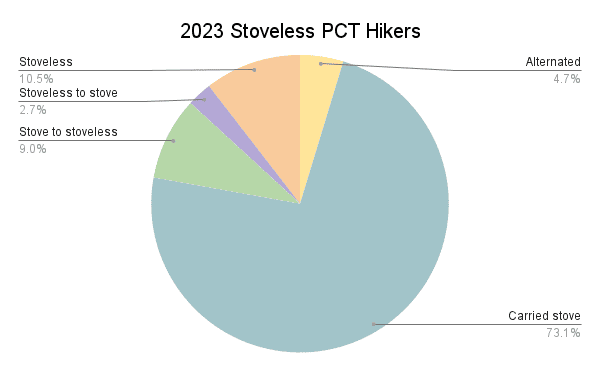
Most Common PCT Stoves
The MSR PocketRocket 2 was the most common stove on the Pacific Crest Trail this year (for the third year in a row). It’s a 2.6 oz / 74 g canister stove that requires a lighter to ignite (i.e., no push-button ignition). The push-button start version, the MSR PocketRocket Deluxe, was the fourth most common stove (also for the second year in a row). The reported boil time for one liter of water is 3.5 minutes (at sea level).
Highest-Rated PCT Stoves
The Snow Peak GigaPower 2.0 was the highest-rated stove on the Pacific Crest Trail this year. It’s a 10,000 BTU stove that weighs 4.23 oz / 120 g and has foldable arms for easy storage. It has a push-button ignition and an optional windscreen. The GigaPower 2.0 packs to 4.1 x 2.65 in / 10.4 x 6.7 cm and, like nearly every other stove on the PCT, uses isobutane/propane gas canisters as fuel.
PCT Stove Breakdown
| Popularity | Rating | Stoves | Price | Weight | Integrated Pot | Fuel |
|---|---|---|---|---|---|---|
| 1 | 9.02 | MSR PocketRocket 2 | $60 | 2.6 oz | 73 g | No | Isobutane canister |
| 2 | 8.76 | BRS 3000T | $20 | 0.88 oz | 26 g | No | Isobutane canister |
| 3 | 9.38 | SOTO Windmaster | $70 | 3.1 oz | 88 g | No | Isobutane canister |
| 4 | 9.28 | MSR PocketRocket Deluxe | $85 | 2.9 oz | 83 g | No | Isobutane canister |
| 5 | 8.97 | JetBoil Flash | $130 | 13.1 oz | 371 g | Yes | Isobutane canister |
| 6 | 9.29 | SOTO Amicus | $45 | 2.5 oz | 71 g | No | Isobutane canister |
| 7 | 8.94 | JetBoil Zip | $100 | 11.75 oz | 333 g | Yes | Isobutane canister |
| 8 | 9.08 | JetBoil MiniMo | $165 | 14.6 oz | 414 g | Yes | Isobutane canister |
| 9 | 9.40 | Snow Peak GigaPower 2.0 | $50 | 4.23 oz | 120 g | No | Isobutane canister |
Water Treatment
Despite what a small vocal minority of hikers may tell you, water treatment is essential on the Pacific Crest Trail. Pooping your pants on the trail (or in town) because you have contracted giardia is not fun. On that note, be sure to sanitize your hands frequently, keep your hands out of bags of food – especially other people’s – and pour that delicious snack into your hand instead.
Hikers have many options available regarding water filtration – hollow fiber membrane squeeze filters, pump filters, UV filters, and chemical treatments (e.g., bleach or iodine), to name a few. Yes, you can also boil water, but boiling water is not a realistic long-term water treatment solution on the PCT, as the amount of time and gas it would take to boil all one’s water would be immense.
97.3% of hikers used a hollow membrane squeeze, gravity, or pump water treatment device. That is to say, just 2.7% of PCT hikers used chemicals or UV to treat water sources.
Four of the top five most common water treatments fall into this category, as do four of the five highest-rated. These filters are typically inexpensive, lightweight, and easy to use, but they can also clog quickly and are susceptible to freezing (and breaking), so it’s important to care for them on the trail properly.
The most common hollow membrane squeeze filter (and the most common water treatment overall), the Sawyer Squeeze, was used by nearly 68% of hikers.
Most Common PCT Water Treatment
The Sawyer Squeeze was (by far) the most common Pacific Crest Trail water filter this year – for the sixth year in a row. It’s a $41, 3 oz / 85 g hollow fiber filter that rids your drinking water of protozoa and bacteria (and floaties). It can be used with Sawyer bags (included with the filter) or compatible water bottles (Smartwater is the bottle of choice for many hikers). The Sawyer comes in two smaller sizes, the Sawyer Micro and the Sawyer MINI.
Highest-Rated PCT Water Treatment
The Platypus QuickDraw was the highest-rated water treatment device on the Pacific Crest Trail this year. It’s a $50 (or $40 for just the filter), 2.2 oz / 62 g hollow fiber filter that rids your drinking water of protozoa and bacteria (and floaties). It can be used with a Platypus bag (included with the filter system) or compatible water bottles (Smartwater is the bottle of choice for many hikers).
PCT Water Treatment Breakdown
| Popularity | Rating | Water Treatment | Price | Weight | Medium | Removes |
|---|---|---|---|---|---|---|
| 1 | 8.95 | Sawyer Squeeze | $41 | 3 oz | 85 g | Hollow fiber | Protozoa / bacteria |
| 2 | 8.03 | Katadyn BeFree | $45 | 2.3 oz | 65 g | Hollow fiber | Protozoa / bacteria |
| 3 | 9.01 | Platypus QuickDraw | $50 | 2.2 oz | 63 g | Hollow fiber | Protozoa / bacteria |
| 4 | 8.43 | Sawyer MINI | $25 | 2 oz | 57 g | Hollow fiber | Protozoa / bacteria |
| 5 | 7.80 | Katadyn Gravity BeFree | $75 | 6.8 oz | 193 g | Hollow fiber | Protozoa / bacteria |
Bear Canisters
A highlight of the Pacific Crest Trail for many hikers is California’s Sierra Nevada. Marked by stunning scenery, high passes, long stretches without roads/signs of civilization, and a propensity for snow, another feature of this section of the PCT is the legal requirement that hikers carry bear canisters.
Bear canisters are essentially bear-proof (not scent-proof) canisters made from plastic or carbon fiber where you store all your food and attractants (anything with an odor). The idea is to prevent bears from being able to access your food and becoming food-conditioned (because once this happens, bears typically become greater threats to humans and are subsequently euthanized).
To the four hikers who carried their bear canisters the entirety of the trail, good on you, and to anyone who brought an Ursack through the Sierra (which is not approved for use) or didn’t carry a bear canister, shame on you.
Most Common PCT Bear Canisters
The BearVault BV500 was the most common bear canister on the Pacific Crest Trail this year – for the seventh year in a row. It has an 11.5 L capacity and is made from polycarbonate (transparent blue plastic). The lid can be removed without tools (or coins), and the canister measures 12.7 x 8.7 in / 32 x 22 cm.
Highest-Rated PCT Bear Canisters
The Bearikade Weekender was the highest-rated bear canister on the PCT this year; it’s also incredibly expensive at $359. It’s made of carbon fiber, has a 10.7 L capacity, and weighs 32 oz / 907 g. A notable difference between the Bearikades and other bear canisters is that the Bearikade’s lid does not completely come off and requires a coin (or other thin, hard object) to open.
PCT Bear Canister Breakdown
| Popularity | Rating | Bear Canister | Price | Weight (oz) | Weight (g) | Capacity | Material |
|---|---|---|---|---|---|---|---|
| 1 | 7.57 | BearVault BV500 | $95 | 40 | 1134 | 11.5 L | Polycarbonate |
| 2 | 7.45 | BearVault BV450 | $84 | 33.6 | 953 | 7.2 L | Polycarbonate |
| 3 | 8.07 | BearVault BV475 | $90 | 36 | 1021 | 9.3 L | Polycarbonate |
| 4 | 8.69 | Bearikade Weekender | $359 | 32 | 907 | 10.6 L | Carbon fiber |
| 5 | N/A | Bearikade Expedition | $424 | 37 | 1049 | 14.7 L | Carbon fiber |
| 6 | N/A | Garcia Bear-Resistant Container | $84 | 43 | 1219 | 10 L | ABS polymer |
| 7 | N/A | Bearikade Blazer | $384 | 34 | 964 | 12.3 L | Carbon fiber |
Bear canister notes: Bear canisters must be carried north of Lone Pine, but most hikers begin carrying them at Kennedy Meadows. Bear canisters also must be used south of Bridgeport – accessible via Sonora Pass. The additional places they must be carried are in Lassen Volcanic National Park (but only if you plan to camp in the park) and in Desolation Wilderness near Lake Tahoe (if you plan to camp within the wilderness boundary).
For more on where bear canisters are required on the Pacific Crest Trail, check out PCT Bear Canister Requirements.
Trekking Poles
Not all hikers carry trekking poles and not all hikers who carry them do so for the entirety of the trail (careful not to leave your trekking poles behind – especially in a hitch).
97.3% of Pacific Crest Trail hikers used trekking poles this year.
If you’ve never used trekking poles before, they may be worth considering if you plan to thru-hike. Here are the most common and highest-rated from this year’s PCT class.
Most Common PCT Trekking Poles
This year, the Black Diamond Alpine Carbon Cork was the most common trekking pole on the Pacific Crest Trail. It’s a 100% carbon fiber set of poles that cost $200, weighs 17.1 oz / 485 g (per pair), has cork grips, an external lever lock, and collapses to 24 in / 61 cm.
Highest-Rated PCT Trekking Poles
Same as the most common trekking poles on the Pacific Crest Trail this year, the highest-rated trekking poles on the PCT were also the Black Diamond Alpine Carbon Cork. It’s a 100% carbon fiber set of poles that cost $200, weighs 17.1 oz / 485 g (per pair), has cork grips, an external lever lock, and collapses to 24 in / 61 cm.
PCT Trekking Pole Breakdown
| Popularity | Rating | Trekking Poles | Price | Weight | Handle | Shaft | Collapsed Length |
|---|---|---|---|---|---|---|---|
| 1 | 9.41 | Black Diamond Alpine Carbon Cork | $200 | 17.1 oz | 485 g | Cork | Carbon fiber | 24 in / 61 cm |
| 2 | 9.34 | Black Diamond Trail Ergo Cork | $140 | 18 oz | 510 g | Cork | Aluminum | 27 in / 69 cm |
| 3 | 9.08 | Black Diamond Trail | $120 | 17 oz | 482 g | Foam | Aluminum | 25 in / 64 cm |
| 4 | 8.49 | Cascade Mountain Tech Carbon Fiber | $75 | 15.6 oz | 442 g | Cork | Carbon fiber | 26 in / 65 cm |
| 5 | 8.25 | Black Diamond Distance FLZ | $170 | 15.7 oz | 445 g | Foam | Aluminum | 16 in / 40 cm |
| 6 | 8.56 | Black Diamond Alpine Carbon Z | $210 | 15.8 oz | 447 g | Cork | Carbon fiber | 15.7 in / 40 cm |
| 7 | 8.96 | Leki Corklite | Discontinued | 19.1 oz | 542 g | Cork | Aluminum | 24.4 in / 62 cm |
| 8 | 9.05 | Fizan Compact 4 | $80 | 12 oz | 340 g | Cork or Foam | Aluminum | 19.3 in / 49 cm |
| 9 | 8.70 | Leki Legacy Lite | $100 | 18 oz | 510 g | Cork | Aluminum | 26 in / 65 cm |
| 10 | 8.79 | REI Co-op Flash Carbon | $159 | 13.6 oz | 386 g | Foam | Carbon fiber | 25 in / 64 cm |
| 11 | 8.13 | Cascade Mountain Tech Aluminum Cork | $30 | 20.8 oz | 590 g | Cork | Aluminum | 26 in / 65 cm |
| 12 | 8.57 | REI Co-op Traverse | $119 | 19.5 oz | 553 g | Cork | Aluminum | 25 in / 64 cm |
| 13 | 7.43 | Gossamer Gear LT5 | $195 | 9.8 oz | 278 g | Foam | Carbon fiber | 23.5 in / 60 cm |
| 14 | 8.54 | REI Co-op Trailmade | $80 | 17 oz | 482 g | Foam | Aluminum | 25 in / 64 cm |
| 15 | 8.75 | Leki Makalu Lite AS | $160 | 18.2 oz | 516 g | Foam | Aluminum | 26.4 in / 67 cm |
| 16 | 7.90 | Zpacks Carbon Fiber | $200 | 14.5 oz | 411 g | Cork or Foam | Carbon fiber | N/A |
Satellite Messengers/PLBs
I am a huge proponent of carrying a satellite messenger or PLB in the backcountry. Honestly, recreating – at least thru-hiking – without one is borderline irresponsible (at best). Fortunately, these devices are becoming more popular; 90.1% of PCT hikers carried a satellite messenger or PLB on the trail.
What’s the difference between a PLB and a satellite messenger? A PLB is a device (generally) without a subscription and with a singular function – to send an SOS. PLBs generally use different satellite networks than satellite messengers and are (at least widely thought to be) more reliable. However, this is not to say that satellite messengers are unreliable.
A satellite messenger (generally) offers two-way communication and additional features such as real-time tracking or maps. Satellite messengers usually require a subscription to function (this typically includes the ability to send an SOS).
For more on satellite messengers and PLBs, check out the Best Satellite Messengers for Thru-Hiking.
Most Common PCT Satellite Messengers/PLBs
This year, the inReach Mini 2 was the most common satellite messenger on the Pacific Crest Trail. The previous (now discontinued) model, the inReach Mini, was the second most common. The inReach Mini 2 is an awesome piece of equipment that can be used for two-way messaging, navigation, tracking, and as an SOS device. It weighs 3.5 oz / 99 g, has an easy-to-use mobile app, and requires a monthly (or annual) subscription to function.
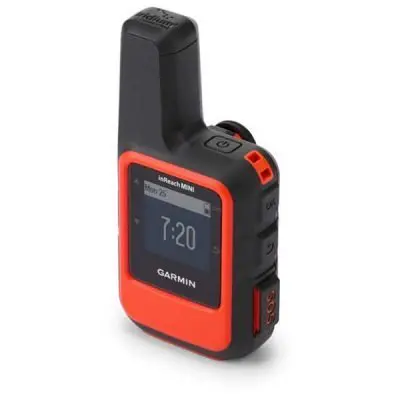
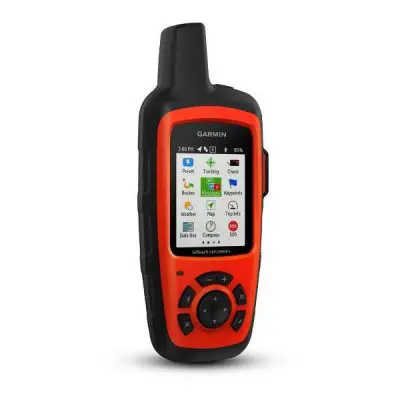
Highest-Rated PCT Satellite Messengers/PLBs
The Garmin inReach Explorer+ was the highest-rated satellite messenger on the Pacific Crest Trail this year, but it has been discontinued and essentially replaced by the Garmin inReach Mini 2 and accompanying app. The Mini 2, as described in the most common satellite messenger above, has an easy-to-use mobile app, two-way messaging, tracking features, USB-C, and weighs 3.5 oz / 100 g. It requires a subscription that can be paid monthly or annually.


PCT Satellite Messengers/PLB Breakdown
| Popularity | Rating | Device | Price | Weight | Messaging | Charging |
|---|---|---|---|---|---|---|
| 1 | 8.85 | Garmin inReach Mini 2 | $400 | 3.5 oz | 99 g | Two-way | USB-C |
| 2 | 8.48 | Garmin inReach Mini | Discontinued | 3.5 oz | 99 g | Two-way | Micro USB |
| 3 | 8.98 | Garmin inReach Explorer+ | Discontinued | 7.5 oz | 213 g | Two-way | Micro USB |
| 4 | 8.70 | Garmin inReach Messenger | $300 | 4 oz | 113 g | Two-way | USB-C |
| 5 | 8.33 | ZOLEO Satellite Communicator | $200 | 5.3 oz | 150 g | Two-way | Micro USB |
| 6 | N/A | Spot Gen3 | Discontinued | 4 oz | 113 g | One-way (presets) | Micro USB |
| 7 | N/A | SPOT Gen4 | Discontinued | 5 oz | 142 g | One-way (presets) | Micro USB |
Ice Axes
Ice axes are not something all Pacific Crest Trail hikers will use. How much snow a hiker encounters depends on the year, the hike’s direction, and the hiker’s start date. Despite passing through the Sierra at a similar time, I saw near-zero snow in the Sierra my first time on the PCT and then hiked through the snow for multiple weeks straight on my second PCT hike.
Perhaps the most important thing to do when choosing an ice axe for the trail is to ensure you know how to use it. An ice axe is not a magical amulet of protection that you strap to your pack or carry through the mountains to ward off the ills of snow travel. It’s a tool that can assist you with snow travel and a tool that has the potential to save your life. If you don’t know what self-arresting is, that’s a good place to start.
This year, 67.8% of hikers carried an ice axe, nearly double last year. 2023 was a higher-than-average snow year, and many, but not all, hikers skipped snowy sections of the PCT and/or flipped-flopped to avoid snow.
Most Common PCT Ice Axes
The C.A.M.P. Corsa was the most commonly found ice axe on the Pacific Crest Trail this year for the second year in a row. It’s the lightest ice axe on the list at 7.2 oz / 204 g and has an all-aluminum construction. The $120 axe has a straight shaft and comes in 50, 60, and 70 cm lengths.
Highest-Rated PCT Ice Axes
This year, the Petzl Glacier Literide was the highest-rated ice axe on the Pacific Crest Trail. It’s an 11.3 oz / 320 g axe with a straight aluminum shaft and a steel adze. It’s only available in a 50 cm size and is designed to be compact. The bottom of the axe has a stainless steel spike that makes penetrating hard snow easier than it is with some of the lighter, aluminum shaft ice axes.
PCT Ice Axe Breakdown
| Popularity | Rating | Ice Axe | Price | Weight | Material(s) | Shaft Shape |
|---|---|---|---|---|---|---|
| 1 | 8.67 | C.A.M.P. USA Corsa | $120 | 8.2 oz | 232 g | Aluminum | Straight |
| 2 | 8.05 | Black Diamond Raven | $100 | 15.7 oz | 445 g | Aluminum, steel | Straight |
| 3 | 8.50 | Petzl Glacier | $110 | 12.3 oz | 349 g | Aluminum, steel | Straight |
| 4 | 7.76 | Grivel G1 | $85 | 15.8 oz | 448 g | Aluminum, steel | Straight |
| 5 | 8.55 | Black Diamond Raven Pro | $130 | 14.2 oz | 406 g | Aluminum, steel | Curved |
| 6 | 8.63 | C.A.M.P. USA Corsa Nanotech | $160 | 8.9 oz | 252 g | Aluminum, steel | Curved |
| 7 | 8.14 | Black Diamond Whippet Ski Pole | $150 | 15.9 oz | 452 g | Aluminum, steel | Straight |
| 8 | 7.77 | Petzl Summit 2 | $140 | 13.4 oz | 380 g | Aluminum, steel | Curved |
| 9 | 8.91 | Petzl Glacier Literide | $110 | 11.3 oz | 320 g | Aluminum, steel | Straight |
Traction Systems
Similar to ice axes, traction systems are not something every Pacific Crest Trail hiker will need every year. If you’re unfamiliar with these, they’re essentially the younger sibling to a crampon – spikes on your feet to make travel across snow and ice easier. Most attach to your shoes via a stretchy harness and have spikes on the bottom below your heel and forefoot for traction.
This year, just over 86.9% of hikers carried a traction device. 2023 was a higher-than-average snow year.
Most Common PCT Traction Systems
This year, the Kahtoola MICROspikes Traction System was the most common traction system on the Pacific Crest Trail, with 55.6% of hikers using it. It’s an over-the-shoe, spikes-on-the-bottom system that weighs 11 oz / 312 g. It comes in four sizes and has stainless steel spikes.
Highest-Rated PCT Traction Systems
This year, the Snowline Chainsen Light was the highest-rated traction system on the Pacific Crest Trail. Similar to the most common traction system, the Kahtoola MICROspikes, the Chainsen Light is an over-the-shoe, spikes-on-the-bottom system that weighs 8.6 oz / 243 g with 12 stainless steel spikes. They’re available in four sizes and cost $70.
PCT Traction System Breakdown
| Popularity | Rating | Traction Device | Price | Weight | Type |
|---|---|---|---|---|---|
| 1 | 8.51 | Kahtoola MICROspikes | $75 | 11 oz | 312 g | Spikes |
| 2 | 7.89 | Kahtoola K 10 Hiking Crampons | $120 | 23.6 oz | 670 g | Crampon |
| 3 | 8.54 | Hillsound Trail Crampons | $85 | 15.7 oz | 445 g | Spikes |
| 4 | 8.90 | Snowline Chainsen Light | $70 | 8.6 oz | 243 g | Spikes |
| 5 | 7.58 | Petzl Leopard FL Ultralight Crampons | $170 | 13.55 oz | 384 g | Crampon |
| 6 | 8.19 | Snowline Chainsen Pro Crampon | $65 | 9.1 oz | 257 g | Spikes |
| 7 | 8.22 | Black Diamond Contact Strap Crampons | $170 | 28.5 oz | 808 g | Crampon |
| 8 | 8.69 | Kahtoola KTS Steel Crampons | $170 | 24 oz | 680 g | Crampon |
Smartwatches/Fitness Trackers
Watches and fitness trackers are not something every hiker uses and are typically overlooked as a piece of thru-hiking gear, but they can be useful on the trail. 31.4% of PCT hikers had a smartwatch or fitness tracker with them on their hikers to collect that sweet hiking data (or maybe just tell them the time). Here are the most common and highest-rated (yes, the lists are the same).
PCT Fitness Trackers
This year, the Garmin fenix was the highest-rated and the most common smartwatch/fitness tracker on the Pacific Crest Trail this year – for the second year in a row. In fact, all four watches used by at least ten hikers had the same ranking for popularity and rating. The Garmin fenix is a full-featured tracker that can provide stats such as speed, altitude, heart rate, weather, sunrise and sunset, storm warnings, maps, and more. It can also be loaded with music, paired via Bluetooth, and is water-resistant to 100 meters.
PCT Smartwatch/Fitness Tracker Breakdown
| Popularity | Rating | Device | Price | Battery | Altimeter |
|---|---|---|---|---|---|
| 1 | 9.11 | Garmin Fenix | $650 | Smartwatch: 18 days GPS: 57 hrs Expedition: 40 days | Pressure-based |
| 2 | 8.65 | Garmin Instinct | $400 | Smartwatch: 28 days GPS: 30 hrs (48 with solar) | Pressure-based |
| 3 | 8.41 | Garmin Forerunner | $600 | Smartwatch: 2 weeks GPS (w/out music): 36 hrs | Pressure-based |
| 4 | 8.14 | Apple Watch | $389 | Standard: 18 hrs Low Power: 32 hrs | Pressure-based |
Highest-Rated vs. Most Common Gear
How do the highest-rated and most common Pacific Crest Trail gear lists stack up? As with previous years, it appears most hikers opted for lighter gear, but those who carried heavier gear were often happy with their choices. The eternal struggle between comfort and weight in the world of thru-hiking marches forward.
| PCT Gear | Highest Rated | Most Common |
|---|---|---|
| Total cost* | $3,660 | $3,201 |
| Total weight – Big 3 | 5.77 lbs / 2.618 kg | 4.78 lbs / 2.166 kg |
| Total weight – Big 4 | 6.97 lbs / 3.163 kg | 5.59 lbs / 2.534 kg |
| All PCT gear (outside Sierra)** | 9.14 lbs / 4.148 kg | 7.92 lbs / 3.594 kg |
| All PCT gear*** | 12.39 lbs / 5.618 kg | 11.67 lbs / 5.294 kg |
Note: The most common shelter requires trekking poles (or a separate kit) and stakes to pitch properly. The highest-rated shelter requires two stakes to pitch properly (and one additional if staking out the fly).
*This does not include the price of a fitness tracker
**This does not include an ice axe, traction, bear canister, poles, shoes, socks, or a fitness tracker
***This does not include poles, shoes, socks, or a fitness tracker
Base Weights
Base weight. The thing that completely defines some hikers, that others have difficulty defining, and that others don’t care about at all. Simply put, it’s how much your backpack weighs when fully loaded with your gear, minus the weight of food, water, and/or consumables (like your poopy paper).
Some hikers will tell you the best gear is the lightest gear and that there’s no benefit to carrying any “unnecessary” weight in your pack. Others will tell you ultralight gear is little better than badly-sewn-together garbage and that having quality gear (without regard to weight) is the only way to live your best trail life. They’re both right, and they’re both wrong. The “right gear” is the gear that works for you (and that you’re happy with).
Ultimately, carrying a lighter pack is more enjoyable than carrying a heavy one. However, not having the proper gear if/when you need it can quickly eliminate any benefit realized from having a lighter pack. The base weight for you is the one you’re the happiest carrying. Anyone who tries to tell you otherwise has no business telling you so.
| Base Weights | Thru-Hikers | Thru-Hikers (1) | Thru-Hikers (0) |
|---|---|---|---|
| Start | 18.35 lb / 8.323 kg | 17.91 lb / 8.123 kg | 19.24 lb / 8.727 kg |
| End | 16.58 lb / 7.521 kg | 16.25 lb / 7.371 kg | 17.27 lb / 7.834 kg |
| Change | -1.77 lb / -803 g | -1.64 lb / -744 g | -1.97 lb / -894 g |
| % Change | -9.7% | -9.3% | -10.2% |
Other Gear Carried
The items detailed above are not the only items in PCT hiker backpacks. There’s a lot of gear that, while not completely necessary (shoes, for example), is still carried by many PCT hikers. If you think any of these should be added to the detailed breakdown, please let me know (headlamps are one I’m considering including in the future).
- 93.1% – Trowel
- 86.6% – Gloves
- 84.2% – First-aid kit
- 75.8% – Bottom baselayer
- 69.1% – Top baselayer
- 65.1% – Neck gaiter (aka Buff)
- 62.7% – Pillow
- 59.0% – Gaiters (shoes)
- 52.7% – Rain pants
- 30.6% – Sleeping bag liner
- 26.4% – Wind jacket
- 22.3% – Wind pants
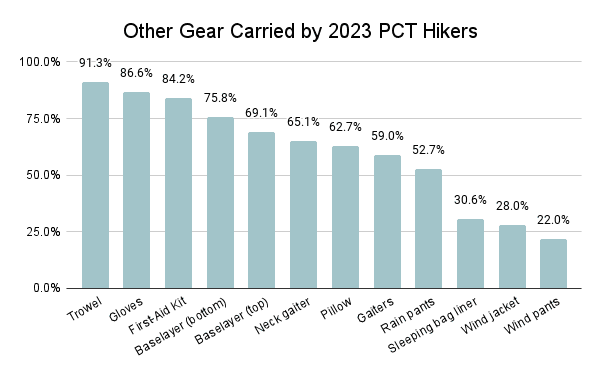
Luxury Items
Pacific Crest Trail hikers obsess over their gear lists and what goes into their packs, but most everyone has something that someone else could consider a luxury item. Some people believe their phone to be an essential and multifunctional piece of gear, while others may scoff at the idea of using one to take photos, listen to music, and use GPS in the wilderness.
In the thru-hiking community, the term “luxury item” can mean many different things depending on who you’re talking to. Essentially, it’s anything not necessary for your trip. However, what’s considered necessary can change greatly depending on who you’re talking to. I will move battery packs out of the luxury item category next year.
Here are the most popular “luxury items” on the trail this year.
- 93.9% – Battery pack
- 58.2% – Camp Shoes
- 35.7% – Towel
- 33.2% – Massage ball
- 23.3% – Journal
- 20.9% – Town clothes
- 12.5% – Deodorant
- 10.3% – Kindle
- 7.9% – Book
- 7.6% – Cards/game
- 3.5% – Down pants
- 1.3% – Fishing pole
- 1.1% – Harmonica
- 0.7% – Frisbee
- 0.4% – Instrument
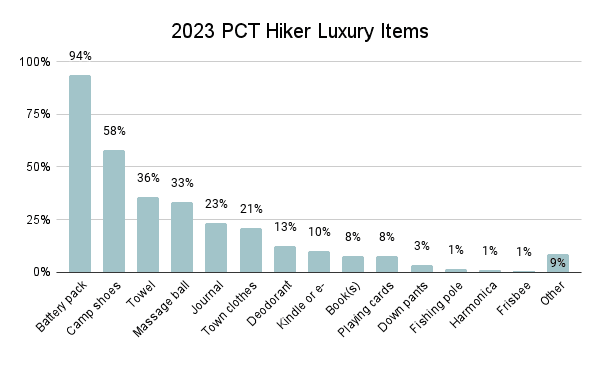
Battery Packs
It should be noted that many hikers yelled at me about including battery packs in the “luxury item” category. Perhaps they’ve now officially become a standard piece of backpacking equipment? Feel free to yell at me in the comments and let me know if battery packs should have their detailed item breakdown in future surveys.
Thru-Hikers
15,061 mAh
Average battery pack size
(M = 13,000 | σ = 6,004)
Gear Advice
To wrap up this portion of the gear breakdown (posts on couples’ gear and gear broken down by gender are on the way), I have advice from this year’s PCT Class on gear choices and gear lists for future PCT hikers.
- Make sure your shell is waterproof, not just water-resistant.
- Consider what other people use, but don’t put too much weight on that. Think about what you want or think you will want even if other people don’t have it or don’t think it is necessary. You will have to figure out for yourself what additional items beyond the essentials you prefer to have. Sometimes, having a few extra items makes a 4-6 month trip more comfortable.
- Don’t blindly follow every ultralight gear advice you find online to save one or two grams. At least test them out before you start and see if they work for you. Otherwise, use the non-ultralight/slightly heavier option to feel more comfortable. You can always ditch your gear and replace it with lighter stuff once you are on the trail!
- If you find one of your big items strapped to the outside of your pack (e.g., tent, sleeping bag, shelter), you are probably carrying too much.
- Invest in gear before your hike! Seriously. Do your research well in advance and purchase if you are able. Chances are the things you like will be much harder to grab once on the trail – especially cottage company gear.
- Gaiters are great – crucial even – especially in the desert and Oregon. It’s not just the annoyance of dust/grit in your shoe, but the very abrasive grit between your socks and shoe padding wears out both way faster. Protect your feet. My bad blisters were when the padding in my shoe got a hole, and the edges started rubbing on my heel.
- I do not have a vagina, but I carried a Kula Cloth to dry off my bum after using my bidet. I would ABSOLUTELY recommend this pairing for anyone who wants to carry a bidet.
- People don’t talk enough about other types of trail shoes that are out there besides Altra, Topo, and Hoka. Feet are so specific I can’t believe people only talk about these three brands. Ultimately, I needed wide shoes with a drop, and New Balance makes great ones, particularly the Hierros. They come in a wide, have an 8mm drop, a reasonable stack height, and come with Vibram soles. No one talks about them. In the end, even these might not be right for you, but you’d do well to look more widely and test the shoes on a multi-day trip before the trail.
- Your gear will not make or break your hike. Focus on training and nutrition.
For more on PCT gear, check out the Ultimate Pacific Crest Trail Packing List.
Support the Survey
Every year, I get a lot of people asking how to support the surveys. Beyond sharing them with your close-knit bubble of weird hiker friends, the best way to support the survey is to contribute via Patreon. You’ll get access to exclusive posts, discount codes, live streams, and super, extra cool stickers so that everyone will know how cool you are.
If you’re not into Patreon, that’s cool; you can Venmo @halfwayanywhere, Cash app $halfwayanywhere, or PayPal moc.erehwynayawflah@tcatnoc
This is not expected. The data collected in the survey will always be free and accessible to everyone who wants/needs it. Your support is much appreciated and helps pay the website (and survey) bills.



Pacific Crest Trail Survey Collection
If you can think of anything that would make this information more useful (or any more gear-related cross-referencing you would like to see), please leave a comment below and let me know.
Affiliate Disclosure: This page may contain affiliate links, which means I may receive small commissions for purchases made via these links at no additional cost to you. This helps pay the bills and keep the site up and running. Thank you for your support!
